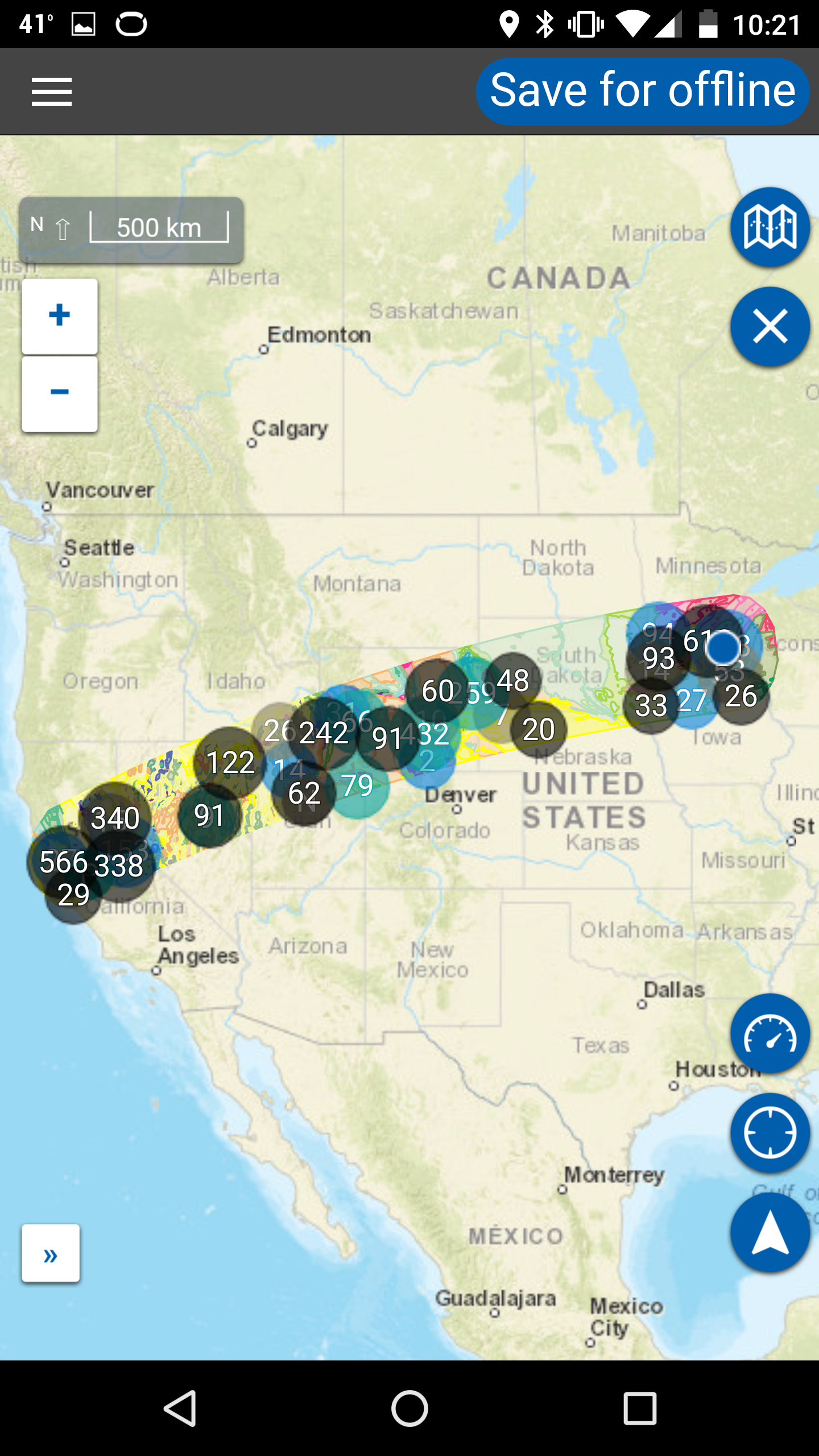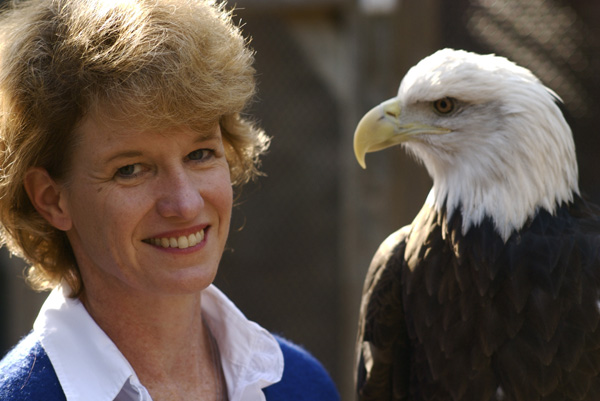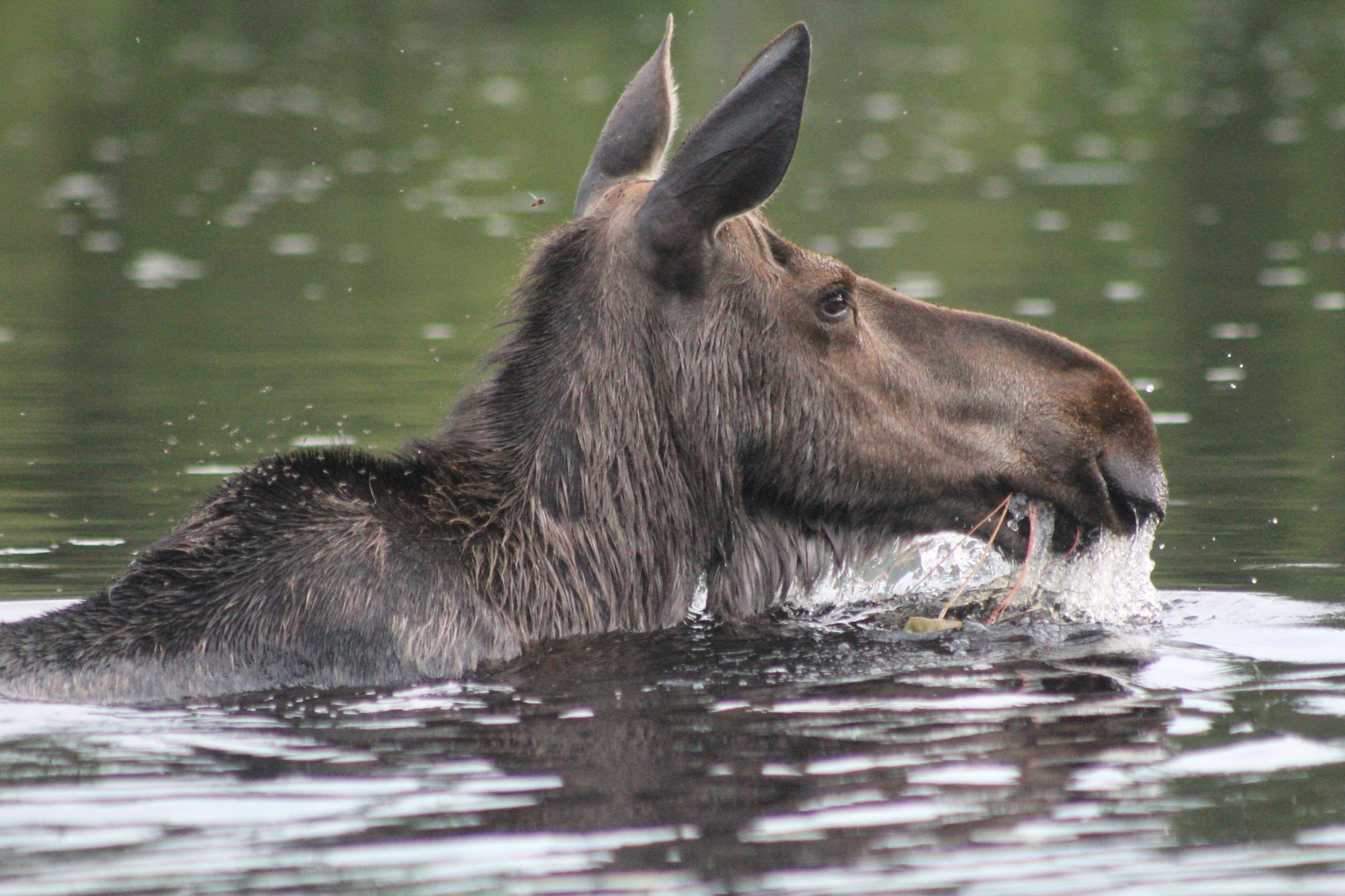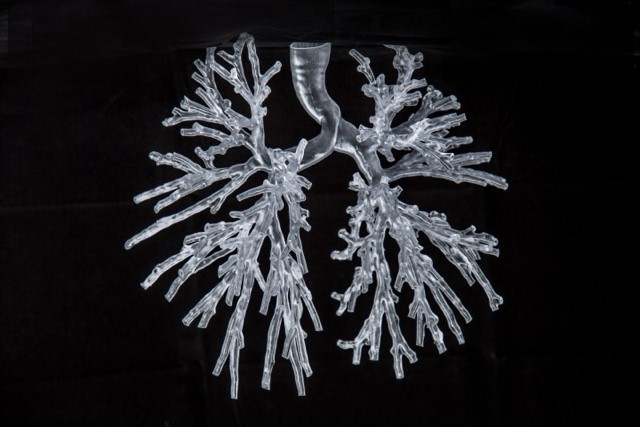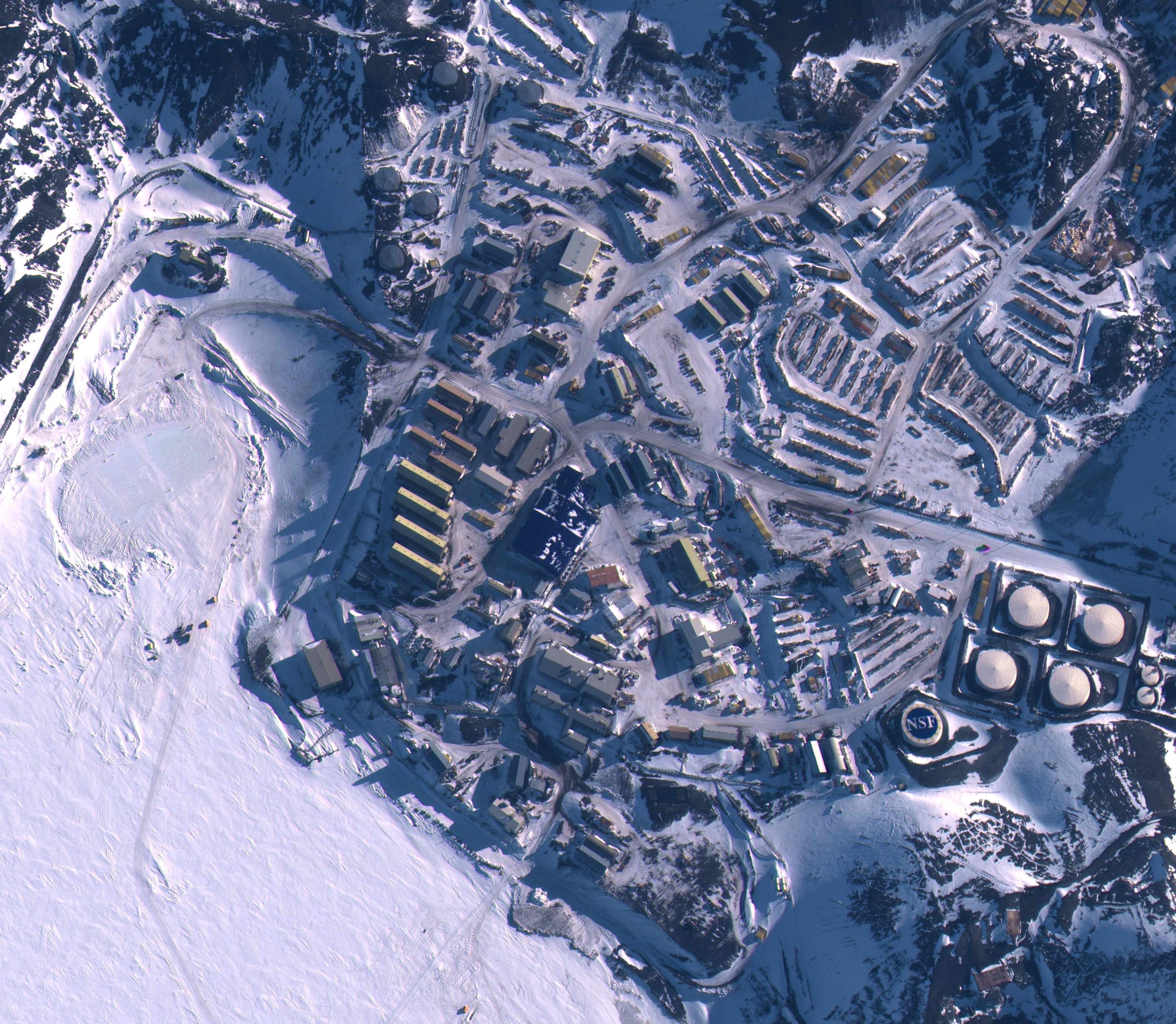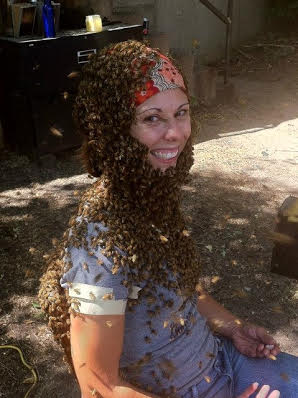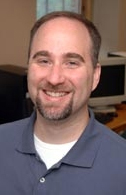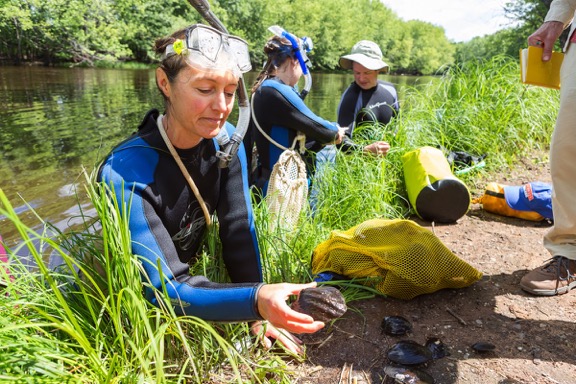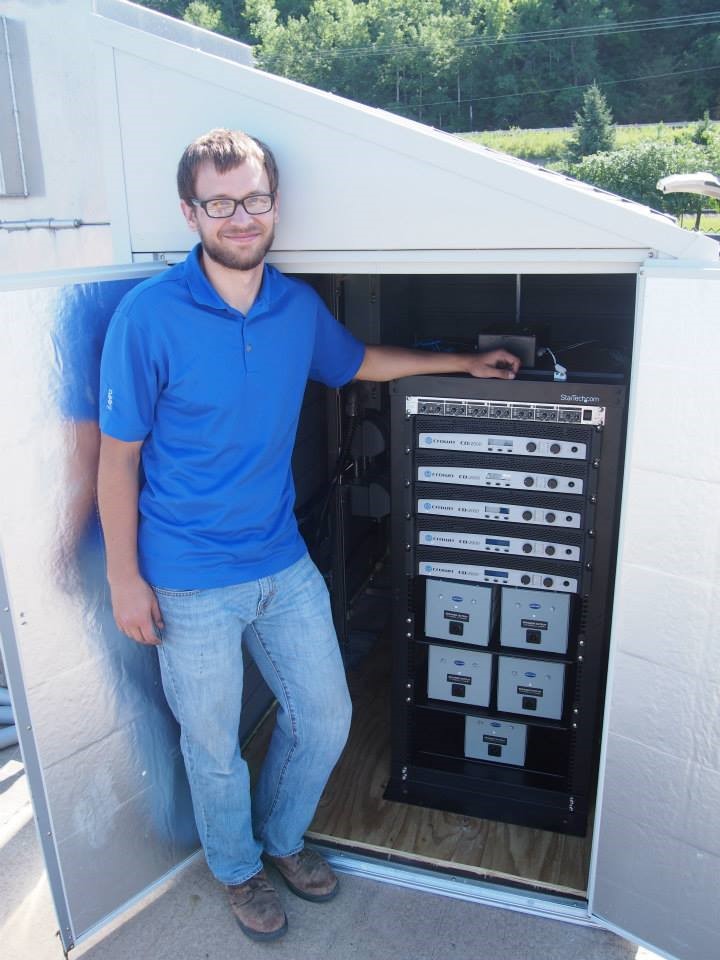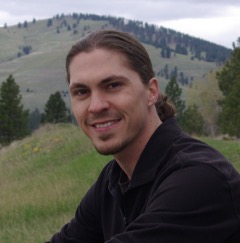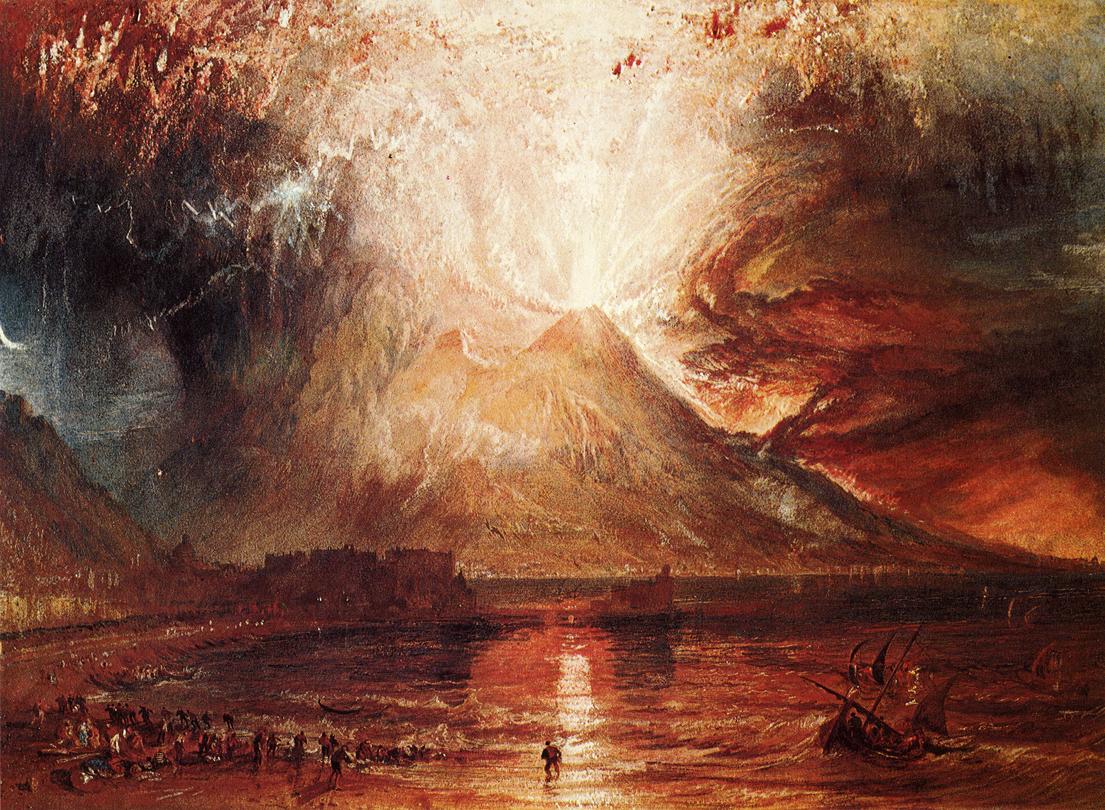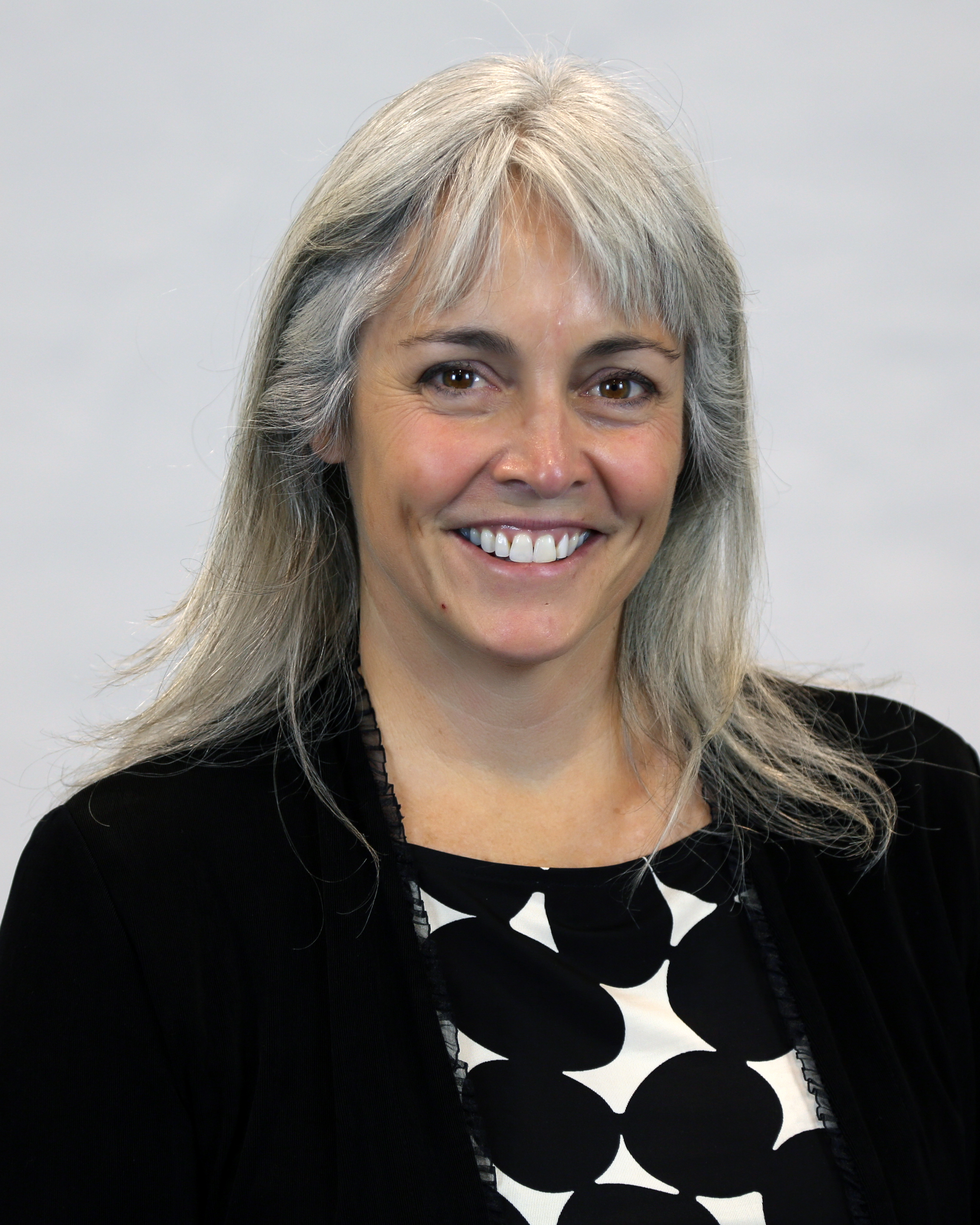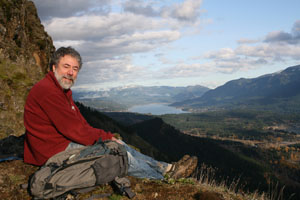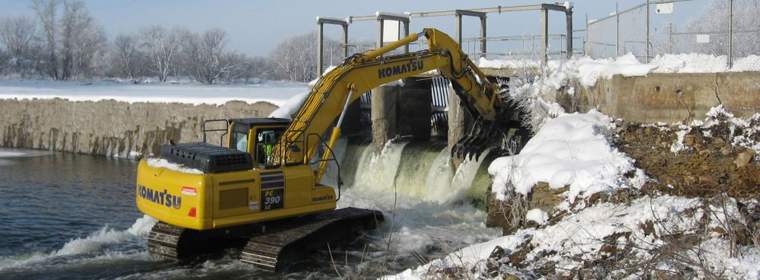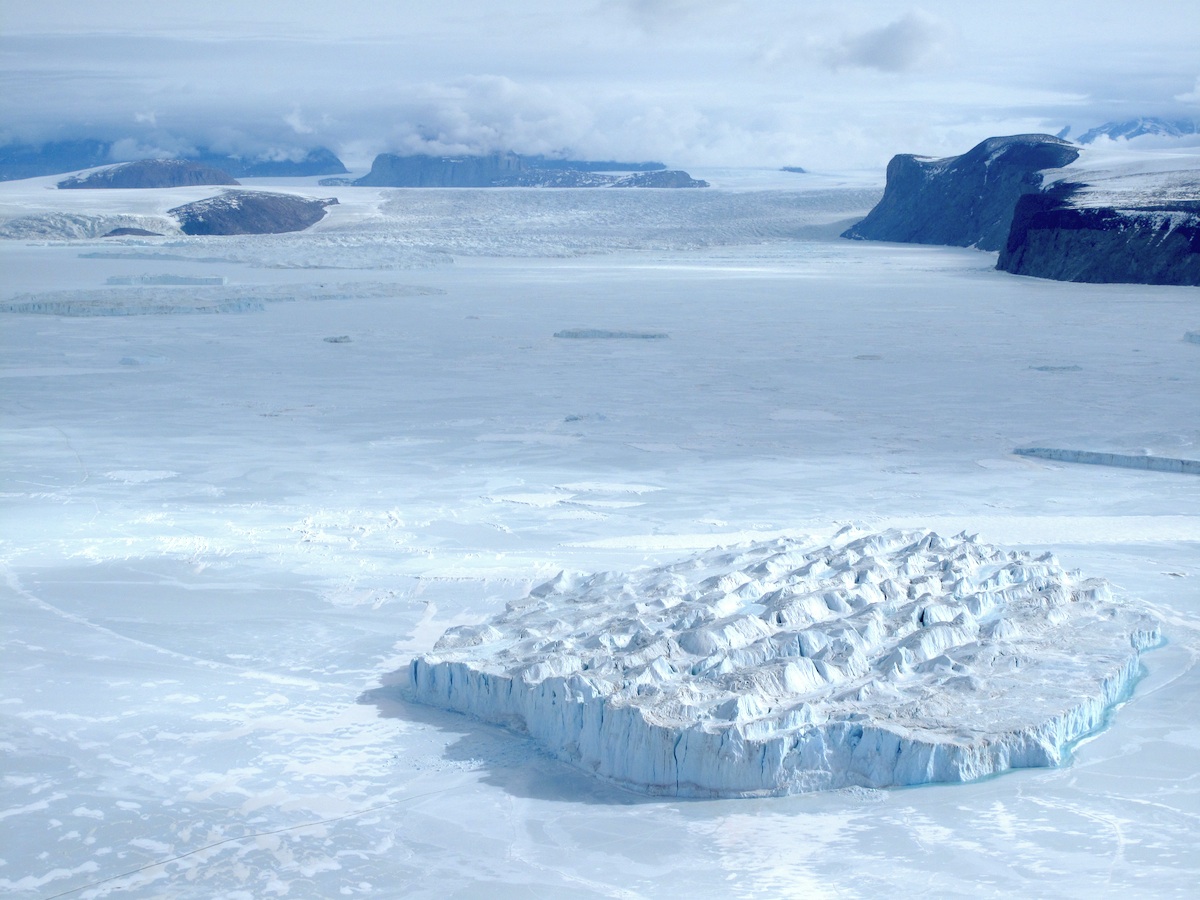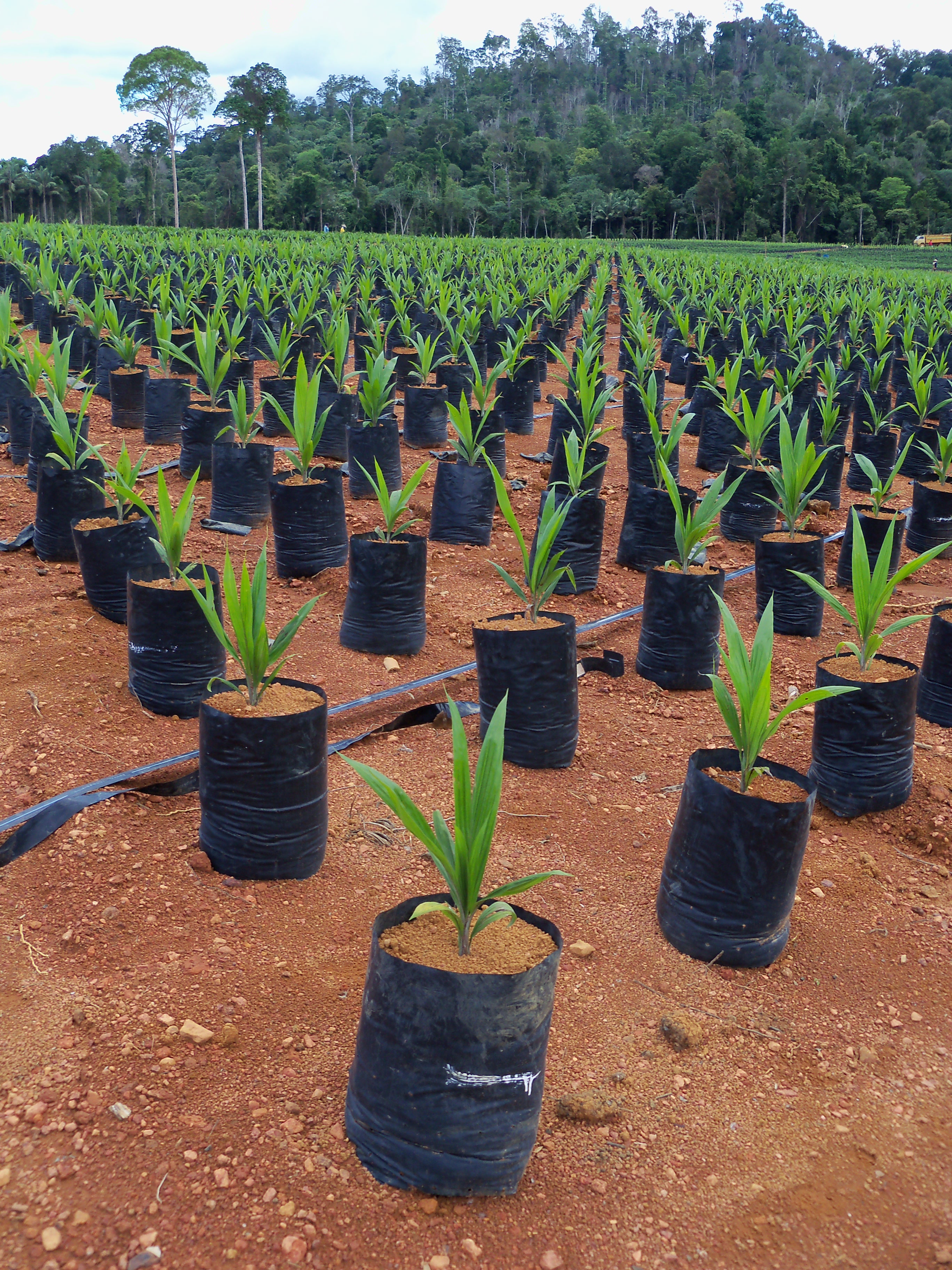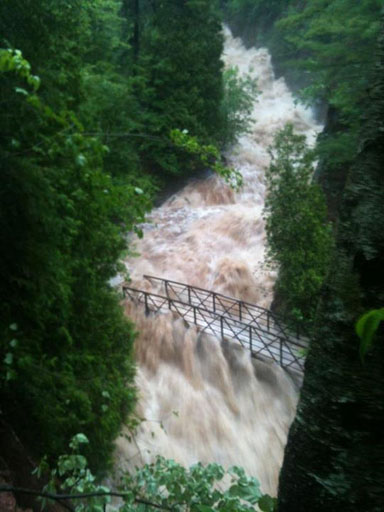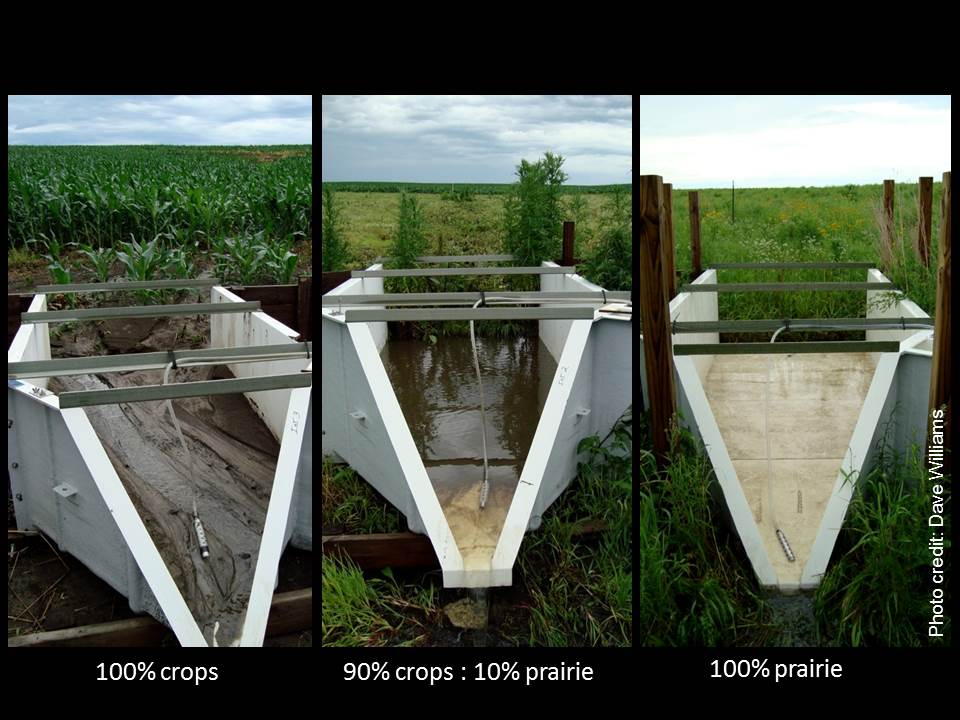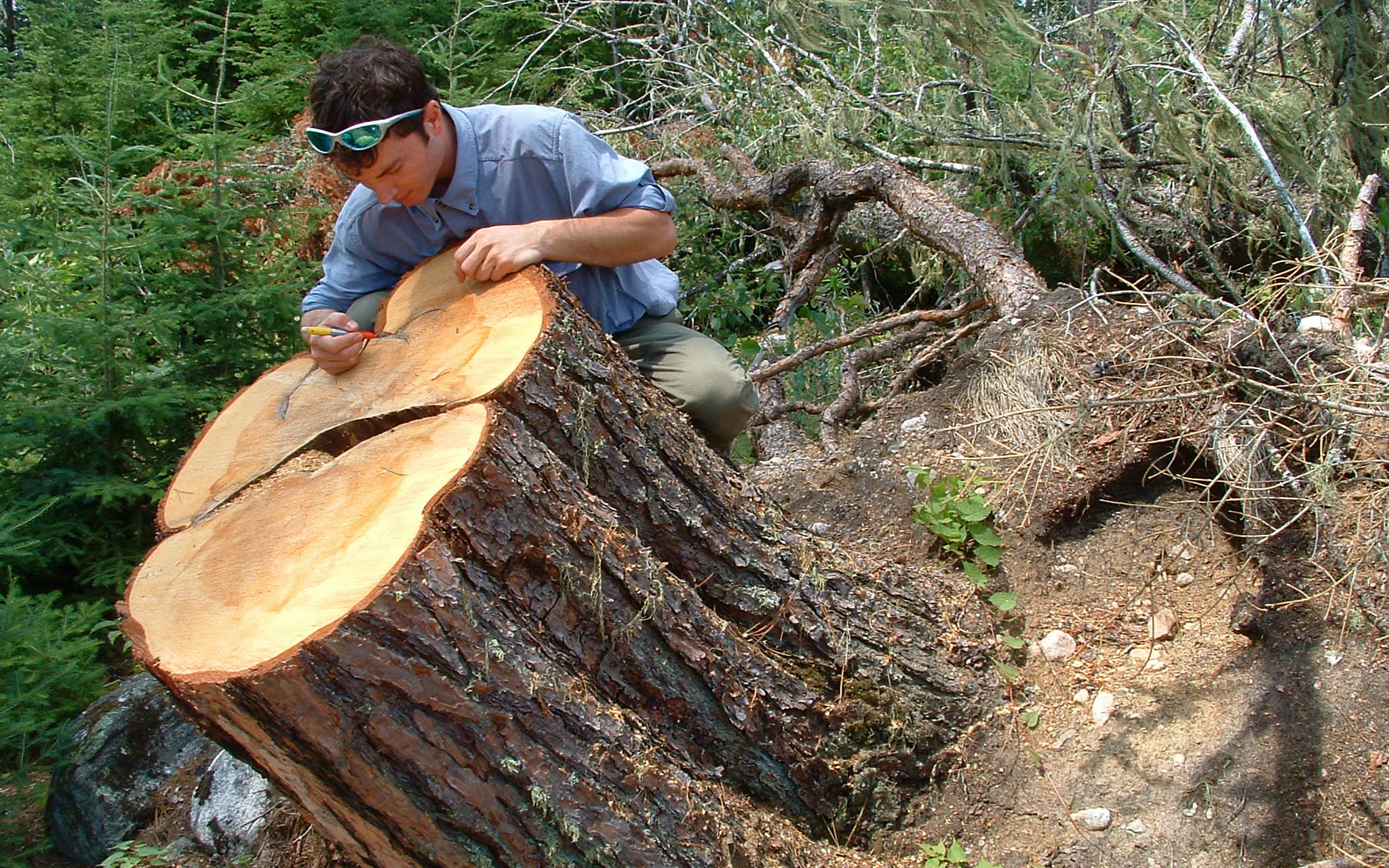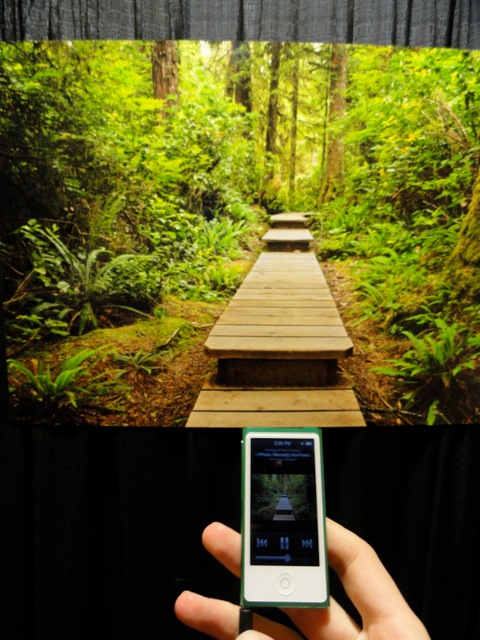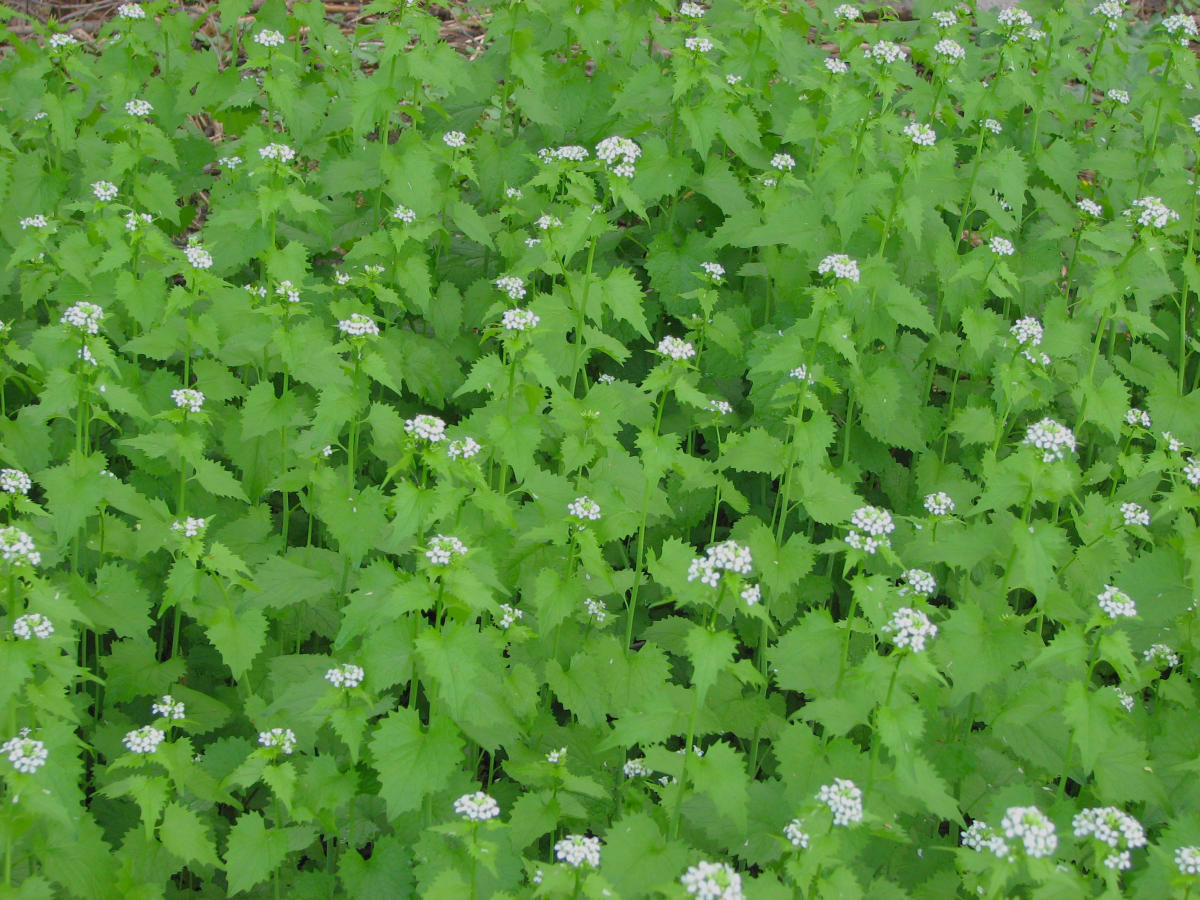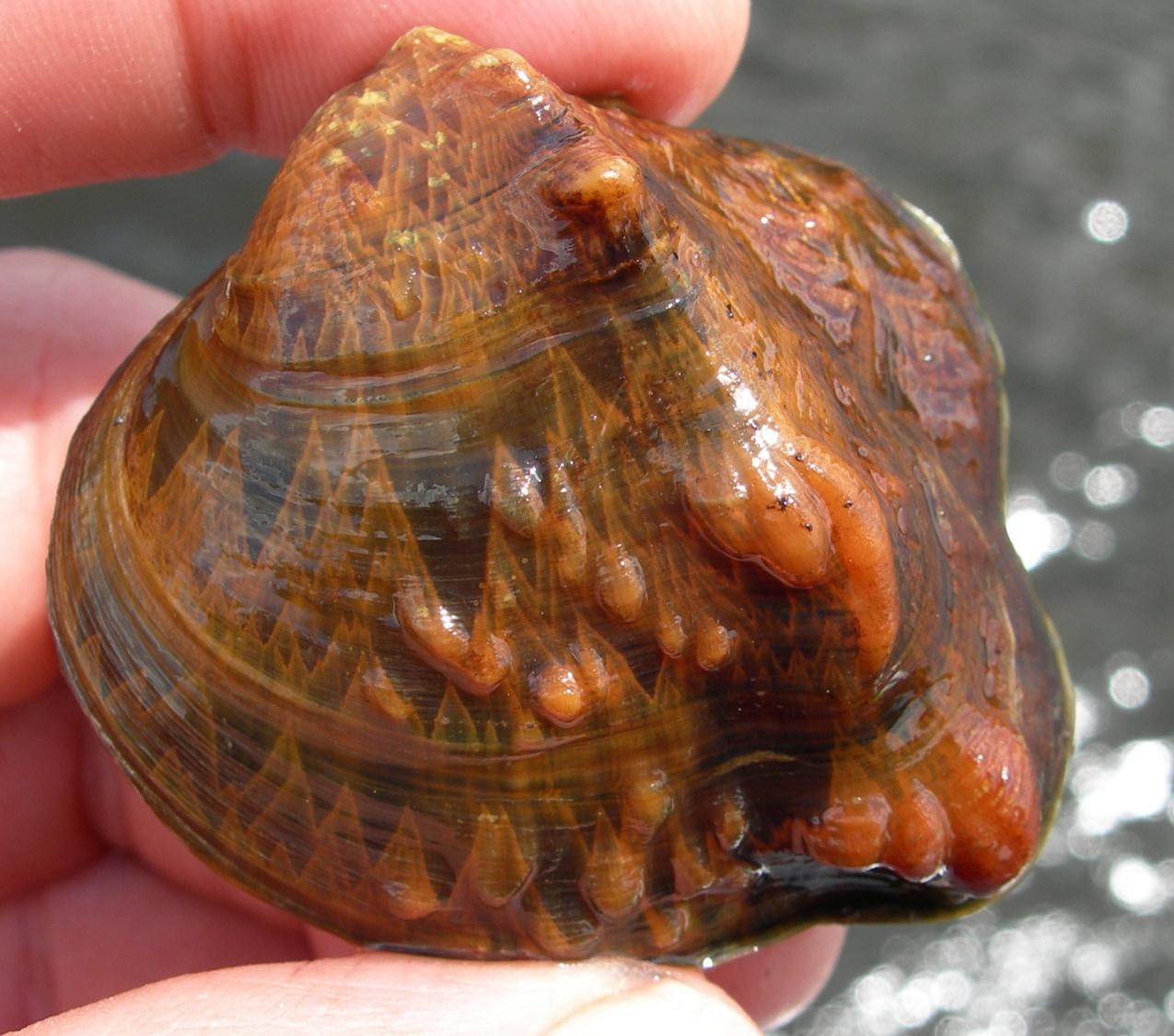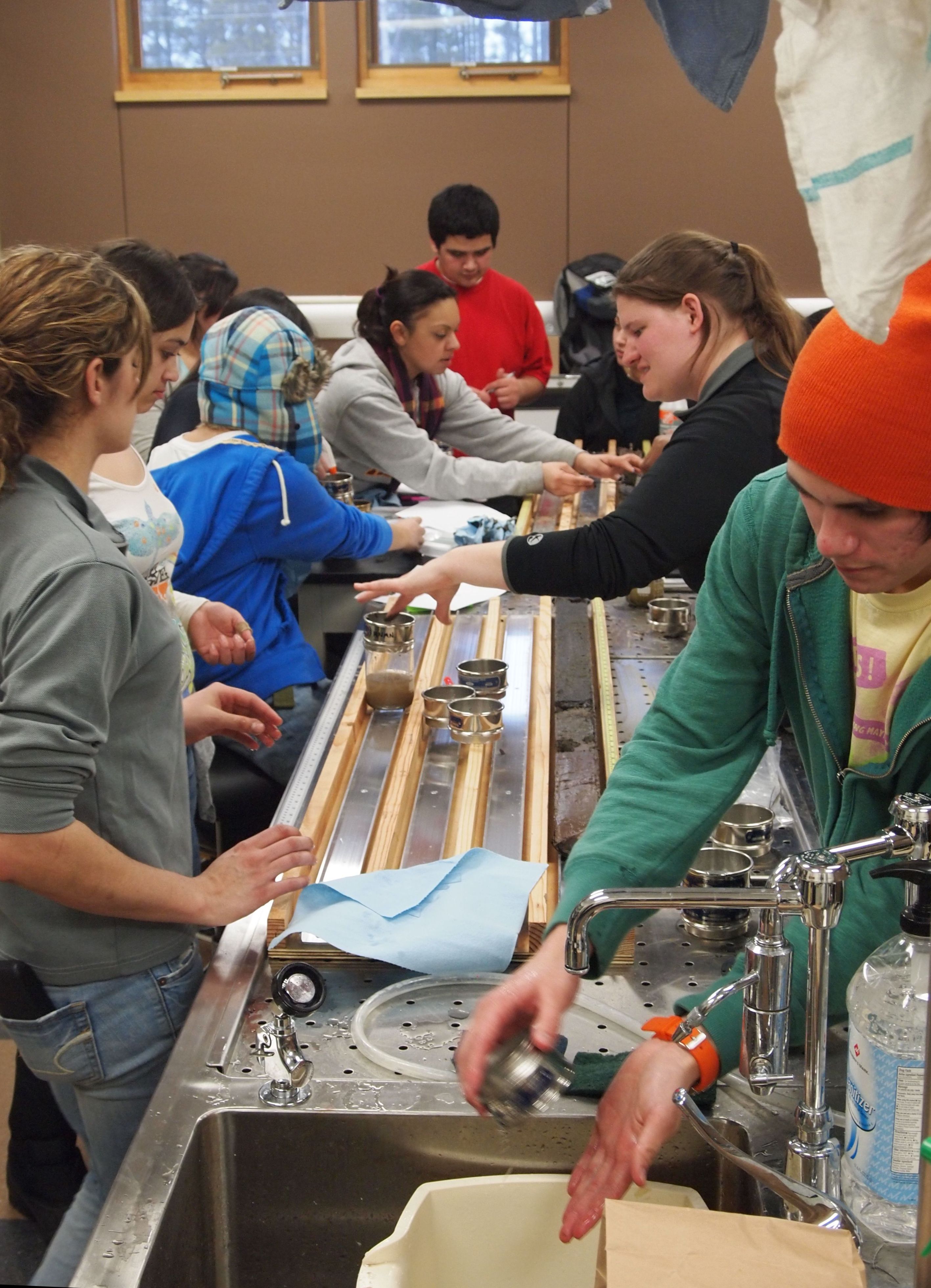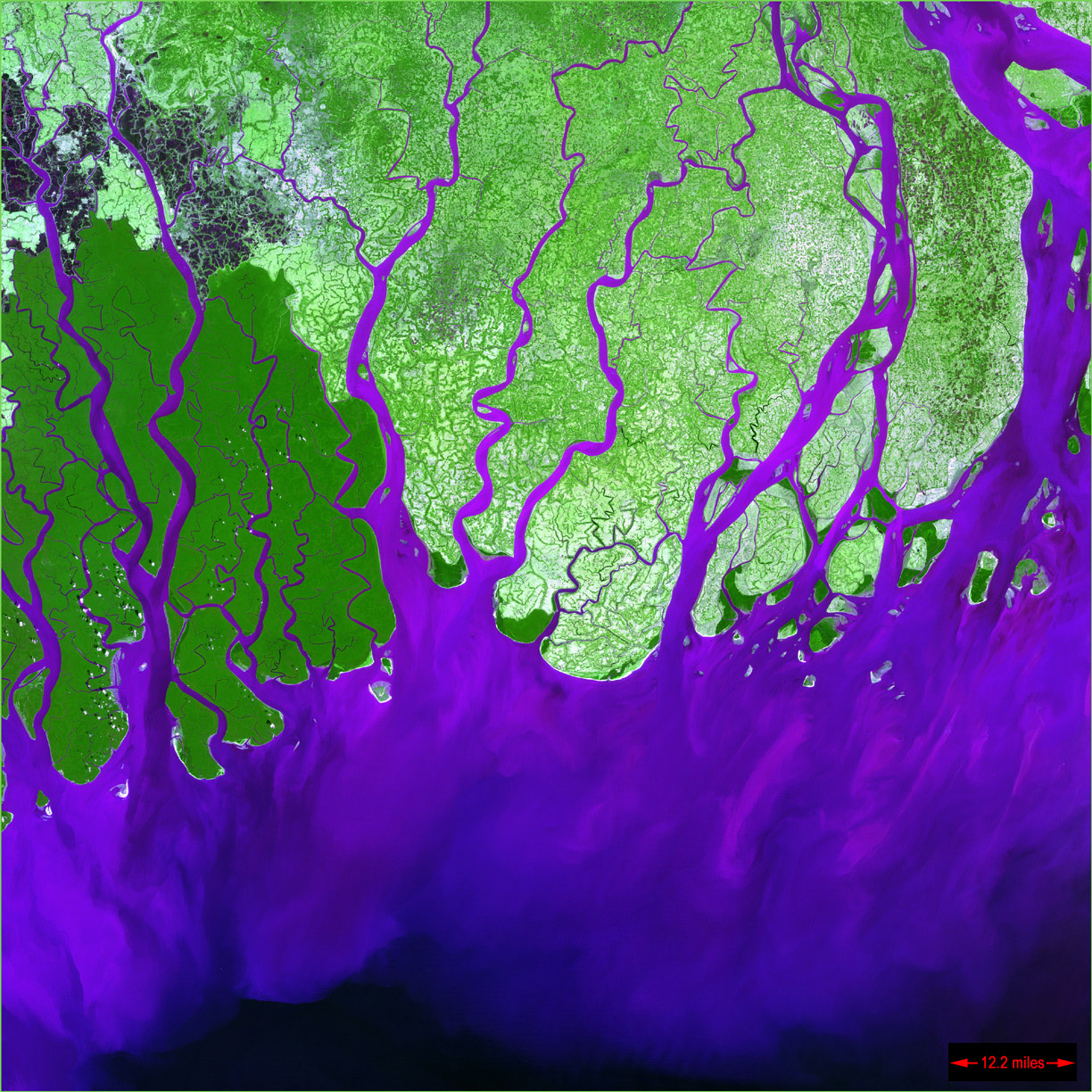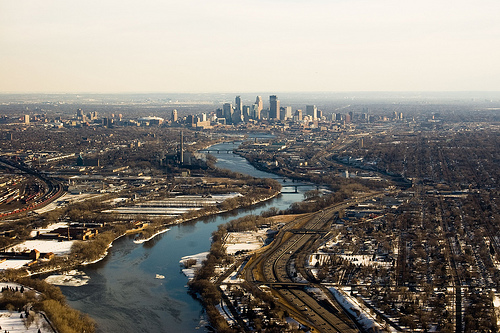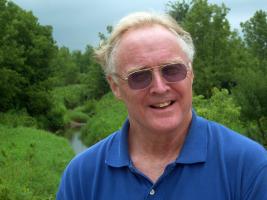Contemporary science is relevant, dynamic, and often provocative. Science Cafés and Café Scientifique events are chances for adults to exchange opinions and ideas about science and its influence on culture, the environment and everyday life.
In that vein, A SIP OF SCIENCE is a science happy hour sponsored by NCED and the St. Anthony Falls Laboratory at the University of Minnesota. It is a forum for researchers to put science in context through storytelling - all over beer, in a cool bar. At 5:30pm on the second Wednesday of each month, NCED will host an happy hour forum in NE Minneapolis.
NCED's A SIP OF SCIENCE brings the wonder of science to happy hour. Sign up for the Sip of Science mailing list.
When: 2nd Wednesday of each month, 5:30pm
Where: Aster Cafe, Saint Anthony Main, Minneapolis
Schedule:
Flyover Country: the mobile app for Earth science
Amy Myrbo, Research Associate and Director of Outreach, Diversity, and Education at LacCore/CSDCO, Department of Earth Sciences, University of Minnesota
Wednesday, November 9th, 2016
5:30pm, Aster Cafe, River Room
Please RSVP!
Are you the sort of person who wants to know all about the landscape you're flying over, driving through, or hiking across? What geologic wonders are under your feet? Were fossils discovered here? Were there volcanoes in this spot a billion years ago? What could you unravel if you had access to the databases and field trip guidebooks that Earth scientists use? Amy will talk about the popular mobile app Flyover Country, developed at the University of Minnesota and funded by the National Science Foundation. It can be used worldwide when you travel - or from your armchair, to learn about a place you've always wanted to visit.
Amy Myrbo is a Research Associate and Director of Outreach, Diversity, and Education at LacCore/CSDCO, Department of Earth Sciences, University of Minnesota. When not leading Team Flyover Country, she studies the dangers of sulfate discharge to wild rice and wetland ecosystems, and helps other scientists take core samples from lakes around the world.
Invasive Mammals vs Endemics: Who will be voted off the island?
Julia Ponder, Executive Director, The Raptor Center, University of Minnesota
THURSDAY, October 20th, 2016
5:30pm, Aster Cafe, River Room
Please RSVP!
Invasive species are the leading cause of bird extinctions on islands worldwide. Eradication of these animals is an increasingly used conservation tool to protect endemic island species. Protecting biodiversity through conservation actions can be an inexact science and a dirty proposition in a race against time — a high stakes contest to save species, protect populations and preserve biodiversity. Join us as Dr. Julia Ponder talks about the challenges and rewards in the effort to eradicate invasive rodent populations and protect endemic species in the Galapagos Islands.
Julia Ponder is Executive Director of The Raptor Center at the University of Minnesota’s College of Veterinary Medicine. She received her degree in veterinary medicine from Texas A&M University and has a Masters in Public Health from the University of Minnesota. Dr. Ponder has presented around the world on avian and raptor medicine. In addition to her clinical work, she is currently focused on the wildlife health component of Ecosystem Health, raptors as sentinels for infectious disease and environmental contaminants, and identifying emerging issues related to raptor health and populations. She has worked with endangered and threatened raptor populations, and consulted globally on raptor health issues.
A Disappearing Icon: Understanding the Decline of Minnesota's Moose
James Forester, Department of Fisheries, Wildlife, and Conservation Biology, University of Minnesota
Wednesday, April 13th, 2016
5:30pm, Aster Cafe, River Room
Please RSVP!
Across the globe, spatial patterns of land cover and human land use are changing rapidly. Coincident with these changes are shifts in the spatial and temporal patterns of weather and climate. In Minnesota, the moose population is at the edge of its geographic range where the impacts of these changes can be dramatic and potentially limiting. Professor James Forester from will discuss initial steps to quantify how the Minnesota moose population is responding numerically and behaviorally to changing landscapes, climate, and weather.
As an Assistant Professor in the Department of Fisheries, Wildlife, and Conservation Biology, Forester’s overall research goal is to understand the spatio-temporal processes that affect the distribution and abundance of wildlife species. He is specifically interested in how animals alter their habitat selection and movement paths in response to heterogeneity in resources and risk. His research covers a range of spatial and temporal scales but is primarily focused on how large, mammalian herbivores respond to changing landscapes.
Minnesota’s Water Challenge: The Science & Psychology of managing a sustainable harvest of an “invisible” resource
Paul Putzier, Professional Geologist, Minnesota Department of Natural Resources
Wednesday, March 9th 2016
5:30pm, Aster Cafe, River Room
Please RSVP!
Is Minnesota running out of water? Is our groundwater use draining all the water from our aquifers, lakes, rivers and wetlands? Like all of Minnesota’s natural resources, the use of our water resources is required to meet the needs of our communities and commerce. Yet, the natural ecological systems we value as Minnesotans also rely on clean and plentiful water. The task ahead for our state is to find a balance, creating a sustainable harvest of groundwater and surface water that meets the needs of our society and the needs of the ecosystems we cherish. Join us as Paul Putzier from the Minnesota DNR explores the fine line of managing our water resources.
Paul F. Putzier is a Lead Hydrogeologist in the Hydrogeology & Groundwater Unit of the Minnesota Department of Natural Resources, supporting the department’s efforts to manage water resources sustainably. Paul’s works on the agency’s new Groundwater Management Area program. He is the Project Manager for the North & East Metro Groundwater Management Area, which includes all or parts of Anoka, Hennepin, Ramsey and Washington Counties. Before joining MN DNR, Paul held positions as Operations Manager, Project Manager and Senior Hydrogeologist for several national consulting firms, leading investigation and remediation of State and Federal Superfund, Brownfield and other sites He earned a Bachelor of Science in Geology from University of Wisconsin, Madison (Go Bucky!) and a Master of Science in Geology from the University of South Florida, Tampa (Go Bulls!). Paul is looking for new ‘age appropriate’ hobbies (sadly, no more hockey) and welcomes your suggestions.
The 3D printed lung: how medical imaging, advanced manufacturing, and fluid dynamics may help respiratory health
Filippo Coletti, Assistant Professor, Department of Aerospace Engineering and Mechanics, University of Minnesota
Wednesday, February 17th 2016
5:30pm, Aster Cafe, River Room
Please RSVP!
Our airways, from the trachea to the millions of alveoli, have the surface area of a tennis court. This represents a huge opportunity for efficient drug delivery to our system, but also a great risk when we inhale potentially harmful substances. Therefore, understanding the way airflow and particles are transported in our lungs is of paramount importance for preventing and treating respiratory disease, which has become the third cause of death worldwide. In this talk, Dr. Filippo Coletti will discuss methodologies to investigate the fluid dynamics of inhalation by mixing medicine, engineering, and imaging.
Filippo Coletti obtained his bachelor’s and master’s degrees in Mechanical Engineering at the University of Perugia (Italy) in 2003 and 2005, and a research master in Fluid Dynamics at the von Karman Institute (Belgium) in 2006. He performed his doctoral studies at the von Karman Institute and at the University of Stuttgart (Germany), where he obtained his PhD in Aerospace Engineering in 2010. From 2011 to 2013 he was postdoctoral fellow at Stanford University. In 2014 he joined the faculty of the Department of Aerospace Engineering and Mechanics at the University of Minnesota, and shortly after became a member of the St. Anthony Falls Laboratory. His research, which is mainly experimental, focuses on turbulent and complex flows, including respiratory and cardiovascular fluid mechanics, and transport of particles in the environment.
Mapping in Support of Science in Cold Places: Why we are winning the battle to map the Poles
Paul Morin, Director, Polar Geospatial Center, University of Minnesota
Wednesday, January 13th, 2016
5:30pm, Aster Cafe, River Room
Please RSVP!
The North and South Poles are a long way away, hard to get to, and it’s really hard to do science once you get there. The Polar Geospatial Center (PGC) at the University of Minnesota has been working with US government agencies and partners around the world to bring the remote to the desktops of US scientists. We now have the capability to see every rock and penguin in Antarctica, as well as 95% of the ice on Earth and every lake in the Arctic. Thus, in many ways, the Poles are an easier place to do science than in much of the rest of the globe. Join us as Paul Morin, director of PGC, discusses how PGC is participating in a public-private partnership to topographically map the entire Arctic using satellite based stereo imagery.
Paul Morin is the director of the NSF funded Polar Geospatial Center at the University of Minnesota. He is the US representative for geospatial data to the Antarctic Treaty system. Morin specializes in mapping and earth science visualization, and has contributed to National Geographic, Wired and Scientific American. Morin is coauthor on the bestselling intro Geology textbook "Exploring Geology" and contributed to the BBC series "Frozen Planet."
If we found rock evidence for life on Mars, what might it look like? Microbialites from ancient lakes
Tom Hickson, Professor, University of St. Thomas
Wednesday, December 9th, 2015
5:30pm, Aster Cafe, River Room
Please RSVP!
The Mars orbiter has used remote sensing techniques to demonstrate the presence of active groundwater seeps on our planetary neighbor. The Curiosity Rover has sent back stunning images of deposits that indicate flowing water and, from Gale Crater, what look like lake deposits. If standing water had been present on Mars, it is more likely to have been in the form of lakes, not widespread oceans. If life inhabited these lakes, it would be more likely to be microbial in origin. Geologists have studied marine microbialites (rocks that formed under the influence of microbes), mainly stromatolites, for many decades. However, these marine microbialites differ in important and significant ways from those formed in modern and ancient lakes. We should expect to find lacustrine (lake-influenced) microbialites on Mars if life had established itself there. Ancient lacustrine microbialites here on Earth, mainly from the Cenozoic, provide excellent examples of what to expect if we encounter them on Mars. In this talk, University of St. Thomas geology professor Tom Hickson will cover the basics of microbialite formation, the macro- and microscopic textures of lacustrine microbialites, and some basic microbialite chemistry. We will then focus on ancient and historical lakes from southern Nevada, with examples from other units in the Western U.S.
Thomas Hickson is professor of geology and environmental science at the University of St. Thomas. He graduated from Stanford University in 1999 and completed a post-doc at the St. Anthony Falls Lab immediately before coming on board the St. Thomas faculty in 2000. He is engaged in active collaborative scholarship with undergraduate students to understand the tectonics, paleoclimate, and landscape evolution of the Lake Mead region (Nevada) during the Miocene.
Bee Support: People Helping Bees and Bees Helping People
Rebecca Masterman, Bee Squad, University of Minnesota
Wednesday, November 11th, 2015
5:30pm, Aster Cafe, River Room
Please RSVP!
Honey bees and wild, native bees are now faced with a multitude of challenges that include a lack of floral resources, pests, diseases and pesticides. To address these issues, the Bee Squad was founded in 2011 by Dr. Marla Spivak of the UMN Bee Lab to support both beekeepers and the public in their efforts to help bees. As the outreach arm of the Bee Lab, the Bee Squad communicates the latest bee research to audiences that are passionate about helping bees. Bee Squad has grown significantly and expanded their programs to include innovative ways to not just help bees, but also help people. Now Bee Veterans, Bee Arts and projects that train others who might not have had access to beekeeping are part of the Bee Squad. Additionally, the Bee Squad has launched a national beekeeper citizen science project in an effort to fight the deadly mite pest, Varroa destructor. Come learn more about the research and outreach mission of the Bee Squad!
Becky Masterman has led the Bee Squad program since 2013. She graduated from the UMN Twin Cities first with a BA (major in history, minor in biology) and then obtained a Ph.D. degree in Entomology under the direction of Dr. Marla Spivak studying honey bee hygienic behavior and neurobiology. For the last three years, Becky has been equally obsessed with trying to keep bees healthy and her newly found passion for traveling the world to attend heavy metal and rock concerts.
Studying our Changing Planet from Above: Remote Sensing in Natural Resource Applications
Joe Knight, Remote Sensing and Geospatial Analysis Lab, University of Minnesota
Wednesday, October 14th, 2015
5:30pm, Aster Cafe, River Room
Please RSVP!
The oldest existing aerial photograph is currently housed at the New York’s Metropolitan Museum of Art. Titled “Boston, as the Eagle and the Wild Goose See It,” the image was captured in 1860 by a photographer floating over the city of Boston in a hot-air balloon. Today, the ability to see our world from above has exploded with new remote sensing technologies that not only are visually impressive, but also provide the means to better examine and understand our landscape. Join us as professor Joe Knight talks about how remotely sensed satellite and aerial imagery are used in applications such as monitoring land use change, deforestation, and impacts on water quality.
Joe Knight is an Associate Professor in the Department of Forest Resources at the University of Minnesota. He uses remote sensing and geospatial science to study how our changing land use affects the Earth and its ecosystems.
Ask me about my mussels! The relationship between sediment and native river mussels in Minnesota
Kelly MacGregor, Macalester College
Wednesday, September 9th, 2015
5:30pm, Aster Cafe, River Room
Please RSVP!
Native freshwater mussels are an important part of river ecosystems. Individuals can live for more than 50 years, filtering water for nutrients and stabilizing riverbed sediment in some places. However, widespread habitat destruction, pollution, land-use change and deteriorating water quality can impact mussel populations. Join us as Macalester College professor Kelly MacGregor describes a current collaborative study between Macalester College, the University of Minnesota’s St. Anthony Falls Laboratory, and River Life that investigates the impacts of riverbed and suspended sediment on mussel diversity, health and happiness. The most recent portion of the research involved snorkeling four rivers (the Snake River, the Chippewa River, the Cottonwood River, and Le Sueur Rivers) this past summer. Mussel shells and stories will be shared!
Kelly MacGregor is a professor and chair of the Geology Department at Macalester College in St. Paul. She has a B.A. in Geology from Williams College, and a Ph.D. in Earth Sciences from UC Santa Cruz. She is a geomorphologist with a focus on glacial erosion in alpine landscapes, and has done both numerical modeling of glacial erosion and field work on alpine glaciers in Alaska, British Columbia and Montana. Professor MacGregor is currently working on several projects, including environmental and climate change since the Last Glacial Maximum in Glacier National Park using lake sediments, and the dynamics of sediment transport on the St. Croix and Minnesota Rivers in Minnesota. She and her husband, also a geologist, live in St. Paul with their two kids and a motley crew of pets.
Water Bar: Creating Open Spaces for Conversations and Connections
Wednesday, May 13th, 2015
5:30pm, Aster Cafe, River Room
Works Progress Studio
Please RSVP!
Water Bar is a public art project created by Works Progress Studio and collaborators. It is, most simply, a bar that serves local tap waters. Water Bar was developed by artists Shanai Matteson and Colin Kloecker of Works Progress in conversation and collaboration with scientific researchers, environmental advocates, arts organizers, public employees, educators, artists, and other community residents who drink water and care about the issues it touches. It is an open space for the generation of conversations and connections around the life-sustaining, precarious, communal activity of drinking tap water, and an evolving, itinerant, living project. We invite Water Bar visitors to engage with one another, as well as with project collaborators, who tend bar and share their knowledge of water and water issues. Water Bar is a place to talk, to quench your thirst, to inquire, and to share personal stories and reflections.
Works Progress Studio is an artist-led LLC based in the Twin Cities of Minneapolis-St. Paul, Minnesota, and led by husband-wife Collaborative Directors Colin Kloecker and Shanai Matteson. Works Progress engages an expansive network of artists, designers, organizers, and other creative people to realize imaginative public art and design projects rooted in place and purpose. These projects take many forms, all created through a collaborative, participatory, publicly-oriented creative process that responds to location, ecology, and the capacity and creativity of individual people living and working together.
Keeping the Flying Carp Grounded: Optimizing Mississippi River Lock and Dams to Block Silver and Bighead Carp
Wednesday, Arpil 8th, 2015
5:30pm, Aster Cafe, River Room
Daniel Zielinsky, Minnesota Aquatic Invasive Species Center, University of Minnesota
Please RSVP!
Silver (Hypophthalmichthys molitrix) and bighead (H. nobilis) carps (collectively known as “Asian carp”) are reproducing as far north as Pool 19 near Keokuk, IA, and threaten to expand northward into Minnesota waters where few have been caught to date. In 2014, researchers at the University of Minnesota, led by Dr. Peter Sorensen, began work on a project aimed at optimizing the Upper Mississippi River lock and dam systems for blocking Asian carp through gate modifications while using acoustic deterrents in locks. The first objective of the project combines computational modelling with experimental swimming tests to identify changes to gate operation that might inhibit passage of Asian carp while having minimal impacts on native fish. The second objective seeks to develop and test acoustic deterrents to keep Asian carp out of lock chambers (sound is ideal for this effort as Asian carp are more sensitive to sound than most native fishes, and thus can be targeted in a species specific manner). This presentation will provide a brief primer on Asian carp in the US and details on how lock and dams might be turned into velocity and acoustic barriers for Asian carp, including the installation and function of an acoustic deterrent system at Lock and Dam #8 (Genoa, WI).
Dr. Zielinski is a Postdoctoral Research Associate at the Minnesota Aquatic Invasive Species Research Center specializing in ecohydraulics, underwater acoustics, and numerical modeling. With a Ph.D. in civil engineering from the University of Minnesota, much of his work has focused on the design of experiments aimed at quantifying behavioral responses of fish to acoustic and hydrodynamic stimuli and the development of advanced numerical models describing organism and physical transport processes.
The Fargo-Moorhead Flood Diversion Project
Wednesday, March 11th, 2015
5:30pm, Aster Cafe, River Room
Miguel Wong, Barr Engineering and Chris Ellis, St. Anthony Falls Laboratory, University of Minnesota
Please RSVP!
For decades the cities of Fargo, North Dakota, and Moorhead, Minnesota, have been plagued by flooding from the Red River of the North and its tributaries. As part of a team of consultants hired by the two cities, Barr worked with the USACE St. Paul District to develop and compare solutions to the problem—and provide relief to an area that, in the past 16 years, has experienced six of the 10 largest flood events since 1897. Expedited after the flood of record in 2009, the fast-track feasibility study for this large and complex undertaking was completed in just three years, and the project is now in final design. The ultimate goal of the project is construction of a 36-mile-long diversion channel to direct floodwater around the Fargo-Moorhead metropolitan area. This presentation will highlight work on two unique project features: the Maple aqueduct and spillway structures, and the artificially constructed meandering low flow channel.
Born and raised in Peru, Miguel Wong obtained his bachelor’s degree in civil engineering there. He earned his master’s in hydraulic engineering from the UNESCO-IHE Institute for Water Education in the Netherlands, and his PhD from the University of Minnesota. His doctoral work at the St. Anthony Falls Laboratory yielded a proposed modification to a well-established bedload-transport equation that the U.S. Army Corps of Engineers subsequently incorporated into its HEC-RAS modeling software. Miguel, who now has more than 20 years of experience, has acquired the last nine as a senior water resources engineer at Barr Engineering Co., consulting on hydrologic modeling, hydraulic design, river-mechanics analysis, and water management.
Chris Ellis is a Senior Research Associate at the St. Anthony Falls Laboratory. With over 30 years of experience, Chris is engaged in fundamental and applied water and wind related research. He is one of the Lab’s primary resources for experimental and measurement design and implementation including scientific/engineering systems design, facility design and fabrication, and high speed automated data acquisition and analysis.
From Mother Corn to GMO: Indigenous Peoples and Plant Genetics
NOTE CHANGED DATE: THURSDAY, February 12th, 2015
5:30pm, Aster Cafe, River Room
Clint Carroll, American Indian Studies, University of Minnesota
Please RSVP!
Humans have modified food crops to produce desirable traits since the birth of agriculture, but today this modification mainly occurs at a plant’s genetic level. The ever-growing prominence of genetically modified (GM) foods, and the debates they have sparked, are an unavoidable part of our lives today. But what are the implications of this increasing amount of technology involved in food production—including the patenting and commodification of genetically modified crops—for, specifically, American Indian peoples? How do biopatenting standards privilege certain forms of modification over others? How might a concept like “food sovereignty” work to heal American Indian communities and decrease colonial dependency? Join us as Dr. Clint Carroll addresses these questions and more through indigenous perspectives on intellectual and cultural property, and the recent indigenous traditional food movement.
Dr. Clint Carroll is an Assistant Professor of American Indian Studies at the University of Minnesota-Twin Cities. He holds a Ph.D. in Environmental Science, Policy and Management from the University of California-Berkeley and a B.A. in Anthropology and American Indian Studies from the University of Arizona. Clint is an enrolled citizen of the Cherokee Nation and works closely with his tribal community on issues of environmental policy and cultural revitalization. His forthcoming book, Roots of Our Renewal: Ethnobotany and Cherokee Environmental Governance (University of Minnesota Press, Spring 2015), situates this work in the context of broader discussions of tribal governance and political ecology. He teaches courses on American Indian ecological perspectives and environmental issues.
Volcanoes and Our Past
January 14th, 2015
5:30pm, Aster Cafe, RIVER ROOM
Kent Kirkby
Please RSVP!
Volcanic eruptions are among some of the most spectacular events in our shared human experience. All too often though, eruptions are treated as historic oddities - unusual events of limited importance in the greater scheme of things. When typically volcanism does make it into history books, the mention is brief, focusing on the eruption and its immediate death toll. This myopic approach grossly underestimates the long term impacts volcanism played in human history and how it has shaped our society. Join us for the January Sip of Science as geology professor Kent Kirkby presents the opportunity to acknowledge, perhaps even celebrate, the roles volcanism has played in human history.
A gift of three plastic dinosaurs at the age of seven sparked a career path for Kent Kirkby -- and graduate research undertaken while living in a mountain lion’s cave in the southwest confirmed it. Kirkby, now a teaching professor at the University of Minnesota, worked for more than a decade in the oil fields of Colorado and Alberta, Canada before returning to academia. Since coming to the university twenty years ago, he’s focused on developing more effective teaching methods often interwoven with storytelling. While his courses have touched on topics ranging from natural disasters and dinosaurs to the geology behind landscape paintings at the Minneapolis Institute of Arts, all have focused on the intersection of human history and Earth processes. A native Wisconsinite, who has yet to develop a taste for Minnesota hot dishes, Kent has two sons who have fled the nest, and currently lives with his wife (also his best friend), three cats and a decent-sized green aluminum Brontosaur.
A Slippery Slope: Using Geology to Better Understand and Mitigate At-Risk Hillsides
December 10th, 2014
5:30pm, Aster Cafe, RIVER ROOM
Carrie Jennings, Minnesota Department of Natural Resources
Please RSVP!
This past June was not only Minnesota’s wettest June, but Minnesota’s wettest month on record. The amount and intensity of the rainfall led not only to wide-spread flooding, but created ideal conditions for landslides and/or slope failures. A slope failure, characterized as a failure of rock, sediment and vegetation, occurs whenever gravitational forces overcome the resisting forces holding up a hillside or bank. While soil saturation from rainfall events can be a triggering factor of many slope failures, the geology of the slope is also of prime importance, as well as understanding how human alterations to the landscape affect slope stability. Join us as Carrie Jennings, a geologist with the Minnesota DNR, discusses a preliminary inventory of slope failures in the Twin Cities metropolitan area and along the Minnesota River corridor from Jordan to St. Peter, with an emphasis on looking at the underlying geology of those slopes and what may have triggered failure.
Carrie Jennings became a glacial geologist after deciding to go to Alaska for her mandatory six weeks of field camp. Today, her research interests are glacial geology - the deposits of landforms created by glaciers and glaciology - the study of the physics of ice movement. Considered one of the experts in this field, Carrie applied her knowledge of the distribution of glacial sediment in Minnesota (as well as the history of landscape and river evolution) to better define sources of sediment to modern river systems of the state, most notably, the Minnesota River and its tributaries. Before going to work for the DNR in spring 2012, Carrie Jennings worked twenty-one years for the Minnesota Geological Survey doing the same thing - glacial mapping. She received her PhD in 1996 from the University of Minnesota.
Drying out: the Future of Water in the West
November 12th, 2014
5:30pm, Aster Cafe, RIVER ROOM
Gordon Grant, USDA Forest Service
Please RSVP!
The noted sage Yogi Berra once said: “It’s tough to make predictions, especially about the future.” Despite this warning, it is clear that the availability and distribution of water will look very different in 50 years than it does today. While this is likely to be particularly true for regions where water is already scarce, such as the dry American Southwest, it’s also true for regions where water is currently abundant – such as Minnesota and the Pacific Northwest. This talk will focus on what we’ve learned over the past 15 years about where water is likely to be in the western U.S., what factors control its availability and likely changes in the future, and what we can do about it. Drawing on recent studies in hydrology and geology as well as large integrated assessments of river basins in the Pacific Northwest, this talk will explore the uncertain and at times paradoxical future of water in the West.
Gordon Grant is a Research Hydrologist with the USDA Forest Service at the Pacific Northwest Research Station in Corvallis, Oregon, and also Courtesy Professor in the College of Earth, Ocean, and Atmospheric Sciences at Oregon State University He began his career with the research branch of the Forest Service in 1985 with the overarching goal of advancing understanding of how stream networks, watersheds, and entire landscapes respond to changes in streamflow, sediment transport, and wood entrainment. Over the course of his career he has studied diverse drivers of fluvial regimes, including responses to natural disturbances such as fire and volcanic eruptions, changes in forest land use, effects of dam construction or removal, river restoration, climate change, and the intrinsic evolution of geomorphic systems.
The Secret Life of a Tweet
October 8th, 2014
5:30pm, Aster Cafe, RIVER ROOM
Joanne Richardson, River Life, University of Minnesota
Please RSVP!
The rise of social media such as Facebook, LinkedIn, and Twitter enables people to communicate information instantaneously, whether it be a breaking news story, interesting video, or personal updates. While some of the content and contributions from social media users may have us rolling our eyes, the information conveyed through these media portals connects individuals and organizations who may not have connected otherwise. For example, social media is increasingly bringing good science to a wide, interested, and influential audience. Join us at the October Sip of Science as we use a case studies approach to explore the communications of a well-regarded academic scientist to explore the knowledge ecologies of social media communications.
Sip of Science at River City Revue!
September 10th, 2014
Padelford Riverboat, St. Paul
Hosted by the Mississippi River Fund and Works Progress
NCED has participated in past River City Revues, and we're excited to encourage folks to attend the Filth on the River event on September 10th. Learn more about the event and the organization here!
Dynamic Bangladesh: Living in the Land of Superlatives
August 13th, 2014
5:30pm, Aster Cafe, RIVER ROOM
Steve Goodbred, Vanderbilt University
Please RSVP!
The impacts of climate change and sea level rise will disproportionately affect developing nations and low-lying coastal areas. Bangladesh is a country facing both of these challenges, having the world’s 7th largest population living amidst the vast, flat plains of the Ganges-Brahmaputra River delta. However, the first-order challenges that the country faces are met with an abundance of natural opportunity in this dynamic landscape. For our August Sip of Science, researcher and professor Dr. Steve Goodbred will discuss this land, its people, and how their interactions may determine the fate of the region as demand on resources grows.
Minnesota Falls Dam Removal and River Restoration Project
May 14, 2014
5:30pm, Aster Cafe, RIVER ROOM
Tom MacDonald, Barr Engineering, Jim Bodensteiner, Xcel Energy Company
RSVP for $5 Summit Beer!
The US has over 75,000 dams on our rivers, many of them smaller dams that have been in place for decades. Many dams have outlived their original function, whether that includes hydropower generation, flood control, water supply or diversion or a combination of functions. In many cases, dam removal has become an economical alternative to dam maintenance and repair needed to maintain dam stability for public safety.
Beyond providing a potential economical benefit, dam removal can offer the opportunity to ‘restore’ a river by reestablishing river hydrology and ecological connectivity. Join us for the story of the Minnesota Falls dam removal, a 100+ year-old dam initially placed as part of a hydroelectric power project . Learn of the dam’s history and operation with Xcel Energy since 1917, Xcel’s partnership with Barr Engineering to assess different alternatives for dam removal, the actual dam removal process that occurred in 2012-2013, and the site monitoring that has since occurred.
Tom MacDonald is a Water Resources Engineer at Barr Engineering Company. His expertise is in fluvial geomorphology, sediment transport, hydraulic modeling and dam removal. His graduate work at the University of Minnesota’s St Anthony Falls Laboratory (long, long ago) emphasized evaluation of channel migration prediction for Minnesota streams.
Jim Bodensteiner is a Principal Environmental Analyst at Xcel Energy Company. His work experience has entailed ecological study development, implementation and oversight, particularly related to the cooling water intakes for and the thermal discharges from the company’s many steam electric plants sited along rivers in the upper Midwest. He works on water resource and water quality issues for the company, including work in waters (e.g. dam maintenance or repair) projects and including discharge permitting and compliance. He has a B.S. in biology and conducted Graduate Fisheries Science work at the University of Minnesota.
Antarctica - the Last Continental Frontier
April 16, 2014
5:30pm, Aster Cafe, RIVER ROOM
John Goodge, University of Minnesota Duluth
RSVP for $5 Summit Ales all night!
Antarctica. The coldest, windiest, and driest place in the world. It's one of the world's seven continents, but has no permanent human residents due to its hostile environment. Yet, Antarctica has a wealth of information that continues to inform us about our world and how it works. The continental geology of Antarctica is linked to supercontinent formation, resource distribution, stability of the ice sheets, and climate science. Researchers continue to embrace novel technologies that promise to reveal new secrets from the deep ice - to help us learn about Earth changes on a variety of timescales.
Join us as Dr. John Goodge from the University of Minnesota-Duluth takes us on a tour of this last frontier. He has led scientific expeditions to Antarctica 11 times, and is currently funded by the National Science Foundation to help design a new drilling platform capable of boring through ice and reaching the deepest buried bedrock below.
Professor Goodge received his BA from Carleton College; MS from the University of Montana; and PhD from UCLA. He was on the faculty at Southern Methodist University from 1988-2001, and has been a faculty member at UMD since 2002. His research interests are in the areas of continental tectonics and the formation of continental crust, and development of collisional and subduction-zone mountain belts. He has active research in the Transantarctic Mountains of Antarctica and the subglacial geology of East Antarctica, including 11 extended field seasons in Antarctica. At UMD, Professor Goodge has been awarded over 2.6 million dollars in research grants from the National Science Foundation, and has successfully secured external funding of more than $700,000 for new laboratory instrumentation and equipment for teaching and research. Dr. Goodge has published numerous peer-reviewed works in international earth science journals and edited books, including over 30 first-authored papers. John was recognized with the Chancellor's Award for Distinguished Research in 2013-14.
Climate Changed: Adapting to Changes Now and in the Future
March 12th, 2014
5:30pm, Aster Cafe, RIVER ROOM
Patrick Hamilton, Science Museum of Minnesota
RSVP for $5 Summit Ales all night!
Temperatures are rising, dew points climbing, precipitation increasing and extreme weather events growing in frequency. Climate change is underway in Minnesota, and with that comes many big questions. What are the implications of these changes and what are likely trends as we contemplate the future? What measures might we want to implement both individually and collectively to enhance our resilience to climate change? Is it possible to adapt to climate change in ways that also enhance our quality of life, lower greenhouse gas emissions, improve disaster recovery and advance our economic competitiveness? Join us as Pat Hamilton, Director of the Global Change Initiative at the Science Museum of Minnesota, examines these questions and provides some thoughts as we move forward into our ‘climate changed’ future.
Patrick Hamilton is the Director of Global Change Initiative at the Science Museum of Minnesota, a resident fellow of the University of Minnesota’s Institute on the Environment and a board member of District Energy St. Paul. Patrick has been producing environmental projects for the Museum for 29 years. In recent years, these projects have included Water, an international traveling exhibition developed with the American Museum of Natural History; the Big Back Yard, the museum’s outdoor environmental science park; and Science House, the museum’s net-zero energy building. Patrick’s current project is Future Earth – exhibits, films, programs, and demonstration projects that explore the challenges and opportunities of humanity as the dominant agent of global change. Away from the museum, Patrick and his wife J. like to kayak and grow organic, blue-ribbon-winning plums, pears and peaches in St. Paul.
The oil palm: Agricultural marvel, environmental menace?
February 12th, 2014
5:30pm, Aster Cafe, RIVER ROOM
Kimberly Carlson, Institute on the Environment, University of Minnesota
Palm oil is probably an integral part of your life. Used in products ranging from granola bars to soap, it is the most-consumed vegetable oil in the world. The high-yielding oil palm, which only grows near the equator, has been vilified as a leading driver of deforestation and carbon emissions. Until recently, little robust research has confirmed these allegations. New satellite remote sensing analyses provide documentation of oil palm’s accelerating expansion into Southeast Asia’s tropical forests and peatlands. Carlson will assess the environmental consequences of the rapidly growing oil palm industry, identify gaps in our understanding of how plantation expansion alters ecosystems, and explore potential solutions to reconcile palm oil production with conservation.
Kimberly Carlson is a Global Landscapes Initiative postdoctoral scholar at the University of Minnesota’s Institute on the Environment. She earned her doctorate at the Yale School of Forestry and Environmental Studies. While not exploring trade-offs between agriculture and the environment, you can find Kim on a yoga mat, running around a lake, learning to speak Portuguese, or dancing lindy hop.
Hydrogeology and Geobiology of the Soudan Underground Mine: Applications to Terrestrial and Extra-Terrestrial Research
January 8th, 2014
5:30pm, Aster Cafe, RIVER ROOM
Scott Alexander, University of Minnesota
On the shores of Lake Vermilion, the Soudan Underground Mine is the oldest and deepest iron ore mine in Minnesota. With a depth of 2,341 feet below the land surface (689 feet below sea level), this mine offers more than just a peek into Minnesota’s mining history. This unique State Park offers access to what is referred to as the ‘deep subsurface’ – a world far removed from our human experience at the Earth’s surface. Geologists, physicists, hydrologists, and microbiologists have capitalized on the rare opportunity for research in this underground realm, using the mine for physics experiments where cosmic rays are minimized and exploring the geologic depths to help answer the most basic questions of how our planet (and life on it) evolved. In fact, such research also has applications to discovering life on other planets. Join University of Minnesota’s Scott Alexander as his presentation explores the ongoing research at this unique site.
Scott Alexander has worked 20+ years at the Dept. of Earth Sciences at the University of Minnesota. His projects have evolved over the years from ground water flow in karst regions, to contaminant migration in many rock types, and is now further evolving to microbiology in brines and multi-phase multi-component fluids as in CO2/brine/water/rock systems. All of this work is grounded in physical, chemical, and isotopic measurements of real world systems as a starting point for computer based and laboratory scale simulations.
I Dream of Midway Island: A story of geology, ecology, and the inevitable human footprint
December 4th, 2013
5:30pm, Aster Cafe, RIVER ROOM
Barbara Heitkamp, University of Minnesota
Located ‘midway’ between North America and Asia, Midway Island has a complex history for a 2.4 square mile island. Formed by the Hawaiian volcanic hot spot 28 million years ago, this tiny atoll is well known for being the site for a key WWII naval battle, but it also serves as the primary nesting ground for the Laysan albatross bird. As with many landscapes, human activity over the past century has significantly impacted the island ecosystem, from the lead-based paint chipping off buildings into the sand, tons of plastic washing onshore, acidification of the ocean impacting coral reef growth, as well concerns of sea level rise drowning the island. Indeed, Midway Island serves as a microcosm for illustrating the unanticipated impacts of human activity. Join Barbara Heitkamp as she describes her travels as an environmental consultant to this remote locale, weaving together a snapshot and story of what Midway Island is today and what its future holds in store.
Barbara Heitkamp is a Research Fellow at the St. Anthony Falls Laboratory at the University of Minnesota. She completed her M.S. in Water Resources Science at Oregon State University in 2008 and her B.S. in Geology at Texas Christian University in 2005. She worked three years as field geomorphologist for GeoEngineers in Portland, Oregon. She currently serves as the primary coordinator for a regional stream restoration organization known as the Partnership for River Restoration and Science in the Upper Midwest (PRRSUM).
Duluth Stream Geomorphology and the Solstice Flood of 2012
November 13, 2013
5:30pm
Dr. Karen Gran, University of Minnesota Duluth
Roads and retaining walls collapsed. Cars were sucked into giant sinkholes. A seal escaped the local zoo and were found in traffic. In June 2012, the Duluth area experienced widespread flash flooding, amounting to a 500-year flood event. The floodwaters caused severe damage to infrastructure, stream banks eroded, bluffs failed, and massive quantities of large woody debris swept downstream. How did this happen? With the November Sip of Science, Dr. Karen Gran will cover some background on streams in the Duluth-area, how the geomorphology of these streams can affect their response to floods, and provide some perspective on how the floods have impacted the streams in the Duluth area.
Dr. Karen Gran is an Associate Professor in the Department of Geological Sciences at the University of Minnesota Duluth. She got her Ph.D. from the University of Washington, M.S. from the University of Minnesota, and B.A. from Carleton College. Her research focuses on river geomorphology, including how channels evolve under changing conditions, from volcanic eruptions to land use changes.
September and October 2013 - No Sip of Science during the Great Aster Flood of 2013! Join us November 13th for our next lecture!
A Special Ecological Society of America Sip of Science: Agricultural Change: Making a better Iowa, making a better world
August 7, 2013
5:30pm
Lisa Schulte Moore, Associate Professor, Iowa State University
Want to stem biodiversity loss, enhance fresh water supplies, curtail climate change AND improve people's lives? Then change modern agriculture. Worldwide, agriculture is responsible for more habitat conversion, water pollution, and global warming potential than any other sector of the economy. Furthermore, the current system of food production fails to provide adequate nourishment for one-seventh of the planet's human inhabitants. Where do we begin this monumental task? Iowa, USA.
Iowa's status as the leading producer of corn, soy, pork, and eggs and first-in-the-nation caucuses means the state has disproportionate influence on US farm bills - legislation that delivers food aid to the needy, incentivizes farming practices, and provides the bulk of conservation funding nationwide. While focused within the nation's borders, farm bill legislation has a global ripple effect by tipping the economic playing field. Thus, I posit, if you make a better Iowa, you make a better world. How do we do that? With perennials and partnerships.
Lisa Schulte Moore studies coupled human and natural systems, working at the intersection of the ecological and social sides of sustainable land management through a combination of historical investigation, field studies, and modeling. Her lab has ongoing projects in agricultural landscape management, bioenergy development, oak restoration, and hemlock and pine forest management among others. For her graduate studies at the University of Wisconsin-Madison, and postdoc research the USDA Forest Service Northern Research Station in Grand Rapids, Minnesota, she worked in Midwestern forests. She adopted agricultural ecology as a part of her research portfolio after moving to Ames, Iowa to take a faculty position at Iowa State University in 2003.
Climate change: Charting Preparation and Societal Response to Weather Extremes
May 8, 2013
5:30pm
Craig Edwards, Minnesota Public Radio (MPR) meteorologist
Is it spring around here yet??
Climate change researchers suspect that changing global climate will lead to an increase in severe weather events, flooding, a rise in sea level, intense hurricanes and destructive tornadoes around the world. How can society prepare for these types of events? Is it possible to do so? Craig Edwards, MPR meteorologist and retired Chief Meteorologist of the National Weather Service in the Twin Cities, discusses changes in extreme weather in our region and how developing educational programs to raise public awareness about climate change can help prepare our society for the impacts of future extreme weather events.
With more than 40 years of experience, MPR meteorologist Craig Edwards has a long history with understanding the complexity of Minnesota's weather and monitoring regional climate change. Serving for 15 years as the Chief Meteorologist for the National Weather Service in the Twin Cities, Craig was instrumental in launching regional weather coverage on Minnesota Public Radio. He is a member of the National Weather Association and the American Meteorological Society. His contributions and expertise have been cited in national publications such as the USA Today and the Washington Post, as well as local publications such as the Minneapolis/St. Paul Magazine and Minnesota Monthly. In 2010, Craig also became the first on-sight game-day meteorologist in Major League Baseball. He began his fourth season of providing weather support to the Minnesota Twins at Target Field on April 1st.
The Silica Sand Mining Boom in the Central Midcontinent: Why the Boom, Why Here, and Why the Controversy?
April 10, 2013
5:30pm
Tony Runkel, Minnesota Geological Survey
The recent rapid expansion of silica sand mining in the central United States is driven by demand for proppant, a material used in hydrofracking to keep fractures open as oil and natural gas are extracted from the subsurface. Certain bedrock layers in the Midwest region, especially parts of Minnesota, Wisconsin, Illinois and Iowa, are dominated by sand grains particularly well suited for use as a proppant. These layers are well known to both sedimentologists and industry as some of the most "mineralogically and texturally mature" sandstone on Earth. Tony Runkel from the Minnesota Geological Survey will provide an overview of the expansion of silica sand mining in this region, including geologic interpretations of why our "mature" sand is so special, and why the expansion has been controversial.
Tony Runkel is Chief Geologist of the Minnesota Geological Survey, and adjunct professor in the Department of Earth Sciences - both are units of the University of Minnesota. His research emphasis targets the sedimentologic, stratigraphic, and fracture attributes of Paleozoic bedrock in southeastern Minnesota (including the Twin Cities Metropolitan region), which includes the quartz-rich sandstone layers that are the focus of this presentation. Tony grew up in southeastern Minnesota, and holds a B.A. in Geology from the University of Minnesota, an M.S. from the University of Montana, and a PhD. from the University of Texas at Austin.
What the Trees See: Viewing Modern Environmental Problems through the Lens of Ancient Trees
March 13, 2013
5:30pm
Scott St. George, Department of Geography, University of Minnesota
Trees are wonderful things. They release oxygen into the atmosphere, reduce erosion, and provide both shade and shelter. But trees do much more than just turn carbon, water and oxygen into leaves and wood. They are also amazing natural recorders that keep a permanent history of the environment within their annual growth rings. Because trees can live for hundreds or thousands of years, tree rings provide us with an extraordinarily deep perspective on modern environmental issues. Scott St. George will explain how dendrochronology (the scientific study of tree rings) is helping to answer questions about what the future may hold for Minnesota’s environment.
As an extra bonus, one lucky guest will receive a tree-ring specimen recovered from a spruce forest growing at the very northern tip of Canada’s Yukon Territory!
Public Music, Public Land, Public Water: Connecting Sound and Sustainability
February 13, 2013
5:30pm
Mark Pedelty, Anthropology and Communication Studies, University of Minnesota
Hawai'i to Hurricane Sandy: Can Ecosystem Management Affect Water Resources?
November 14, 2012
5:30pm
Kate A. Brauman, Institute on the Environment, University of Minnesota
Our everyday landscape is constantly evolving and changing. Whether wetlands are converted into productive agricultural fields, prairies, forests and deserts urbanized for towns and cities, or rivers channelized to minimize land loss, the way we design our landscape impacts our water resources and the ecosystem benefits we derive from the environment. With constant pressure for land conversion, we need to develop a better understanding of the impacts of land use on our water and ecosystem resources so it can better inform public decision-making.
Join Institute on the Environment researcher Kate Brauman as she explores quantifying the impacts of land-use change on the municipal water supply in Kona, Hawaii, and how that process can be translated to various environments throughout the world.
Invasive Species: The Biology and Ideology
October 10, 2012
5:30pm
Mark Davis, Macalaster College
Humans have been transporting species from one region of the earth to another, both intentionally and unintentionally for centuries. However, the rate and extent of species introductions have exploded during the past century. For the past several decades, scientists, conservationists, and environmentalists have consistently viewed species introductions as undesirable, and society spends considerable effort and money to prevent new introductions and to eradicate or manage species that have already been introduced. Yet, to what extent are our views of nonnative species based on good science? To what extent are they influenced by beliefs and values that are not grounded within science? Join biology professor Mark A. Davis of Macalaster College for a lively discussion.
Mark A. Davis is DeWitt Wallace Professor and Chair of Biology at Macalaster College. He is the author of the book Invasion Biology (Oxford University Press, 2009) and co-author of the influential essay “Don’t Judge Species on their Origins,” published in Nature in 2011. Professor Davis appeared on MPR and Science Friday with Ira Flatow. He was educated at Harvard and Dartmouth.
The Surprising Life of Native Mussels
September 12th, 2012
5:30pm
Mark Hove, University of Minnesota
Freshwater mussels are one of the most endangered animal groups in North America, but the role of these mollusks in freshwater ecosystems, including our own Mississippi River, is vital to the survival of other animals and to the stability of the food chain. Freshwater mussels improve water quality in rivers and streams, allowing greater light penetration for algae and other organisms to grow, and they act as excellent indicators of environmental changes. Mussels have mutually beneficial relationships with many species of fish, providing them with nutrients that benefit other animals and humans who eat the fish.
Join mussel researcher Mark Hove in a discussion of these aquatic creatures, including the curious strategies native mussels employ to successfully reproduce, how mussels help not only rivers but people, the anthropogenic impacts on mussels, and mussel conservation.
Outdoor StreamLab (OSL): Life-size Outdoor Experiments to Strengthen Stream Restoration Science
May 9, 2012
5:30pm
Jessica Kozarek
If you've ever visited Water Power Park, the balcony of the Guthrie Theater, or taken the elevator tour at the Mill City Museum, you've likely seen the constructed stream channel adjacent to the St. Anthony Falls Laboratory. The Outdoor StreamLab (OSL), built on an abandoned floodway and fed by the waters of the Mississippi River, provides a unique opportunity to take high resolution, laboratory-quality environmental measurements in controlled outdoor conditions. This setting allows researchers to conduct experiments on stream and river processes that are dependent on sunlight, including algae growth, investigating the effect of vegetation on flowing water, or studying interactions between flowing water, sediment transport, and aquatic habitat. The OSL stream has been flowing continuously since June, 2008 (even in winter!) to maintain a natural stream ecosystem.
As the OSL moves into its fifth year of research, OSL manager Jessica Kozarek will explore what we have learned from these life-size experiments and how researchers seek to understand the effect restoration practices will have on the complex interactions between physical, chemical, and biological river and stream processes.
About our speaker:
Jessica Kozarek is a Research Associate and OSL research director at St. Anthony Falls Laboratory and the National Center for Earth Surface Dynamics at the University of Minnesota. She received her BS degree in Chemical Engineering from Penn State before her obsession with flowing water (and with kayaking) brought her to a MS and PhD in Biological Systems Engineering at Virginia Tech.
Geology and the Terroir of Wine Growing in Minnesota
April 11, 2012
5:30pm
Dr. James Cotter
These are Minnesota cold-hardy wine grapes, specially bred to bear full crops even after the vines experience the cold of Minnesota winters. The University of Minnesota has been in the grape-growing business since the late 1880s, and today, the University is recognized as having one of the top wine grape programs in the United States. Minnesota wines have won awards in both national and international competitions, and the Upper Mississippi Valley American Viticultural Area (AVA) is now is largest appellation (region for wine growing) in the world.
Join glacial geologist Dr. James Cotter as he illustrates how the challenges of wine growing in the Minnesota climate are met with the development of new grape species and innovative growing practices. He will also discuss how the geologic context for wine grape growing may provide insight on the future of wine making in Minnesota.
Seeing Through the Mud: Exploring the Long-Term History of Wild Rice Lakes (and Some Other Lakes Too)
March 14, 2012
5:30pm
Dr. Amy Myrbo
Climate change and human impacts on Minnesota's landscape have altered the habitat of wild rice (Zizania palustris; manoomin in Ojibwe, psin in Dakota). Management and restoration of wild rice can be informed by research that uses core samples from the beds of wild rice lakes. The University of Minnesota is supporting the Fond du Lac Band of Lake Superior Chippewa to trace the historical distribution and growing conditions of manoomin in the reservation's wild rice lakes, while involving middle school through tribal college students in research projects and internships. Join Department of Earth Sciences researcher Amy Myrbo for a whirlwind tour of how we can use core samples from not only wild rice lakes, but other important urban and local lakes, to get students of all ages excited about the connections between science, history, and culture in their own back yards.
Dr. Amy Myrbo is a research associate and lab manager at LacCore, the National Lacustrine Core Facility, at the U of M. She completed a BA in English lit at the U before leaping into the Geology Ph.D. program. Her research includes the geochemistry and sedimentology of lakes; she is also working on the Minnesota Pollution Control Agency's project evaluating the sulfate water-quality standard to protect wild rice waters.
Rivers, Plate Tectonics, and People: Life on the Ganges-Brahmaputra Delta
February 8, 2012
5:30pm
Dr. Andrew Petter
"There is no forgiveness in nature.” – Ugo Betti
Bangladesh, one of the world’s most densely populated and impoverished nations, occupies an extremely dynamic and hazardous portion of Earth’s surface. The ongoing collision of tectonic plates between India and Asia produces very large earthquakes within and around Bangladesh. Meanwhile, one of the world’s largest river systems, the Ganges-Brahmaputra, constantly changes the landscape through yearly monsoonal floods and channel shifting. Researchers at the St. Anthony Falls Laboratory (SAFL) at the University of Minnesota are involved in a project to understand how the tectonic forces interact with these rivers to create the landscape on which 150 million people try to live their lives. Join Dr. Andrew Petter, one SAFL researcher, in exploring life on a tectonically-active delta.
Andrew Petter is a post-doctoral associate at the St. Anthony Falls Laboratory and the Department of Earth Sciences at the University of Minnesota. He completed his bachelor degree in Geology at Rice University, and his masters and PhD in Geology at the University of Texas at Austin. His work looks to understand how active rivers and deltas create sedimentary deposits and conversely, how ancient sedimentary rocks and inform us about Earth’s past.
Future Earth: Thriving on a Human-dominated Planet
December 14th, 2011
5:30pm
Patrick Hamilton
Collectively all seven billion of us now rival natural processes in modifying the Earth. We live in a world being thoroughly reconfigured by human activity. As humans we have set in motion global changes that will reverberate for thousands of years. A diverse portfolio of technologic, economic, social and political innovations is needed for people to thrive on a human-dominated planet. Earth fortunately now is home to the wealthiest, healthiest, best educated, and most innovative, creative and interconnected cohort of humans in history. What is the future we wish to create and live in? Join Patrick Hamilton in an interactive exploration of the challenges and opportunities of living on a human-dominated planet.
Currently, Patrick Hamilton serves as the Director of Global Change Initiatives at the Science Museum of Minnesota and principle investigator for the museum's Future Earth exhibit. He started at the Science Museum of Minnesota soon after graduating with his masters in geography in the early 1980s. He is the lead on several initiatives, including the Science on a Sphere Solutions exhibit, the Big Back Yard, and Earthscapes, working and partnering with groups such as University of Minnesota Institute on the Environment, Columbia University, NCED, and NASA.
A Sense of Where You Are: Science and Knowing on the Mississippi River
November 9, 2011
5:30pm
Patrick Nunnally
In our increasingly connected world, it’s easy to be overwhelmed by the amount of information at your fingertips. There is a growing move to build programs that can synthesize material on a topic from a vast number of sources so we can spend our time connecting and acting on important news and events rather than having to scrounge for the information ourselves.
The River Life Program connects University teaching, research and programs to off-campus partners who are working toward a sustainable river and inclusive planning for our river future. The program utilizes diverse digital platforms and makes strong use of social media to create unique learning opportunities -- students learn from practitioners, river agency staff network more with each other, and communities up and down the river can share their experiences.
Join River Life coordinator Pat Nunnally for an exploration of the Mississippi River, what we know about it, and what it means. After a brief visual tour, Nunnally will engage the audience on a highly interactive exploration of the Mississippi River close to home, right outside our doors, in fact, at the Aster Cafe. (Not to worry: we'll stay inside, and explore through images and discussion).
A Climate for Change: Agriculture and Water Quality in Minnesota
October 12,2011
5:30pm
Norman Senjem
In recent decades, our growing realization of how we pollute our waterways has led to regulation of the most obvious pollution sources. Cities have updated their wastewater treatment systems and industry can no longer dump their waste products into waterways. But what about non-point sources of pollution that trickle into rivers, streams, and lakes from multiple different sources? What are the cumulative impacts of that pollution on our waterways?
Historically, Minnesota has relied on voluntary incentives to reduce non-point water pollution. Norman Senjem, recently retired from the Minnesota Pollution Control Agency, says that voluntary measures are no longer enough. In our October Sip of Science, Norman discusses how non-point pollution is severely impacting Minnesota waterways and what steps can be made to address this growing problem by creating new regulation and incentives to hold polluters accountable, and broadening the context for developing solutions to agricultural pollution.
Agricultural Crossroads: Food, Fuel and the Future
June 8, 2011
5:30pm
Nick Jordan (science), Mother Banjo (alt-country, Americana), Anna Clausen (images)
The rhetoric surrounding agriculture in the state of Minnesota almost invariably invokes a future of sacrifice. Some fear that maintaining the status quo will damage our ecosystems, while others are concerned that alternative approaches to agriculture will lead to economic woe and inadequate food supplies. Nick Jordan, professor of agronomy and plant genetics at the University of Minnesota, wants to change the terms of the dialog from sacrifice to shared opportunity. Jordan wants to facilitate the adoption of land-use practices that take local agriculture in a new, multifunctional direction. Join Jordan, local farmer Tony Thompson, Warren Formo from the Minnesota Agricultural Water Resources Coalition, and Jim Kleinschmit and Anna Clausen from the Institute for Agriculture and Trade Policy for a discussion of a new vision for local agricultural land use, and how we might get there from here. Join us for a discussion of Minnesota agriculture, policy, music, and art.
Muddy Waters and the Minnesota River Blues
May 11, 2011
5:30pm
Carrie Jennings (science), Matt Poppleton (finger picking guitar)
Civilization, by its very nature, has involved reshaping the natural environment to fit human needs. Agriculture, in the Minnesota River Basin, has been a major agent of that restructuring. The story of the Minnesota River Basin is one of a landscape reshaped by its geology and its history of human settlement. It is a story of agricultural intensification and human perturbations that have accelerated soil loss, changed precipitation, and amplified erosional processes. The futures of the river basin and of Lake Pepin, the iconic body of water it impacts, depend upon understanding how human actions are coupling with geological history to threaten these waters.
The Delta Dilemma: Man vs. Nature on the Mississippi
April 20, 2011
5:30pm
Chris Paola (science), Eric Mohring and gary Powell (Cajun Music)
Throughout most of the 20th century, Americans saw nature as theirs for the taking - conquer, build, transform. And we did. Much of our landscape is a testament to what technology has allowed us to achieve. Success, however, often came by deflecting problems elsewhere, and to a large extent, the future. This fact is true nowhere as much as the Mississippi Delta.
For the April 20 SIP OF SCIENCE we have a powerful story of the dynamism of the Earth's surface, the 20th century war humans waged to author its course, the loss we are experiencing in winning, and finally what we have learned about relinquishing control and allowing the natural processes of the Delta to orchestrate restoration.
The search for diamonds in North America
Wednesday, March 9, 2011
5:30pm
Harvey Thorleifson
Diamonds are said to be forever, but where do they originate? North America's geology has excellent potential for diamonds, but only recently has advances in science and technology made discovery possible. Join us for a happy hour discussion with Minnesota State Geologist Harvey Thorleifson on how Canada joined the ranks of world leaders in the production of high quality gem diamonds and how the methods that were key to diamond discoveries in Canada have been applied throughout Minnesota, with some preliminary success.
Road de-icing salt impact on Twin Cities waters
February 9, 2011
5:30pm
Heinz Stefan
Nearly 350,000 tons of road salt is applied for de-icing in the Twin Cities metro area every year. The salt keeps our roads safe during winter, but where does it all go when the ice melts? Join us for happy hour to hear about University of Minnesota Civil Engineering Professor Heinz Stefan's investigation into the effects of road salt on local water quality and the steps that could be taken to address the issue.
Earthquakes, tsunamis, volcanoes, oh my! Shifting tectonic plates
January 19, 2011
5:30pm
Peter Hudleston
Recent events in Haiti, Iceland, New Zealand, and elsewhere have brought Earth's shifting tectonic plates powerfully back into our collective consciousness. As unusual as the recent string of natural disasters may seem, they are the normal result of the steady shifting of tectonic plates of the Earth's mantle. Join us for happy hour as University of Minnesota Geology & Geophysics Professor Peter Hudleston puts recent earthquakes, tsunamis, and erupting volcanoes into the context of current scientific understanding of the gradual and continual changes in Earth's surface.
Weather vs Climate: A local perspective
December 8
5:30pm
Mark Seely
Are summers in Minnesota really getting more hot and humid? Are we experiencing more frequent thunderstorms than we used to? If so, what does it all mean? How do we put our day-to-day weather experience into the context of a changing Minnesota Climate? University of Minnesota Climate Professor and State Extension Climatologist/Meteorologist Mark Seeley has the lowdown on the differentiation between weather and climate and what climate change has in store for the state of Minnesota. Join us for happy hour to learn the local perspective.
Out, out damn'd dam: freeing wild rivers
November 10, 2010
5:30pm
Gordon Grant USDA
Dr. Gordon Grant, a research hydrologist with the USDA Forest Service, works on some of the largest dam removal projects in North America. Addressing the "juicy problems" that accompany such large-scale ecological changes, Dr. Grant will lead a lively discussion on the complexities of removing a long-standing dam and environmental management in the wake of its removal.
